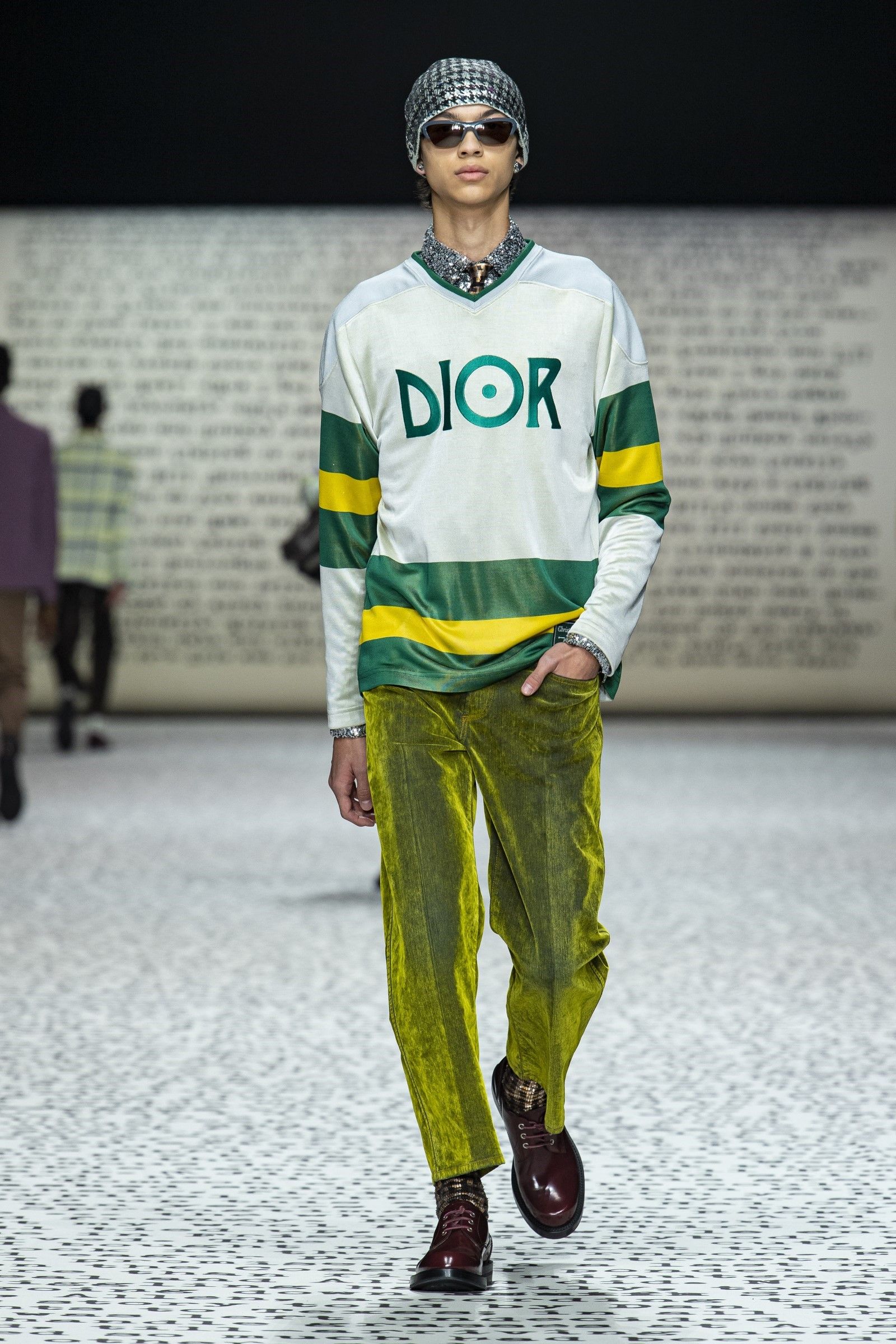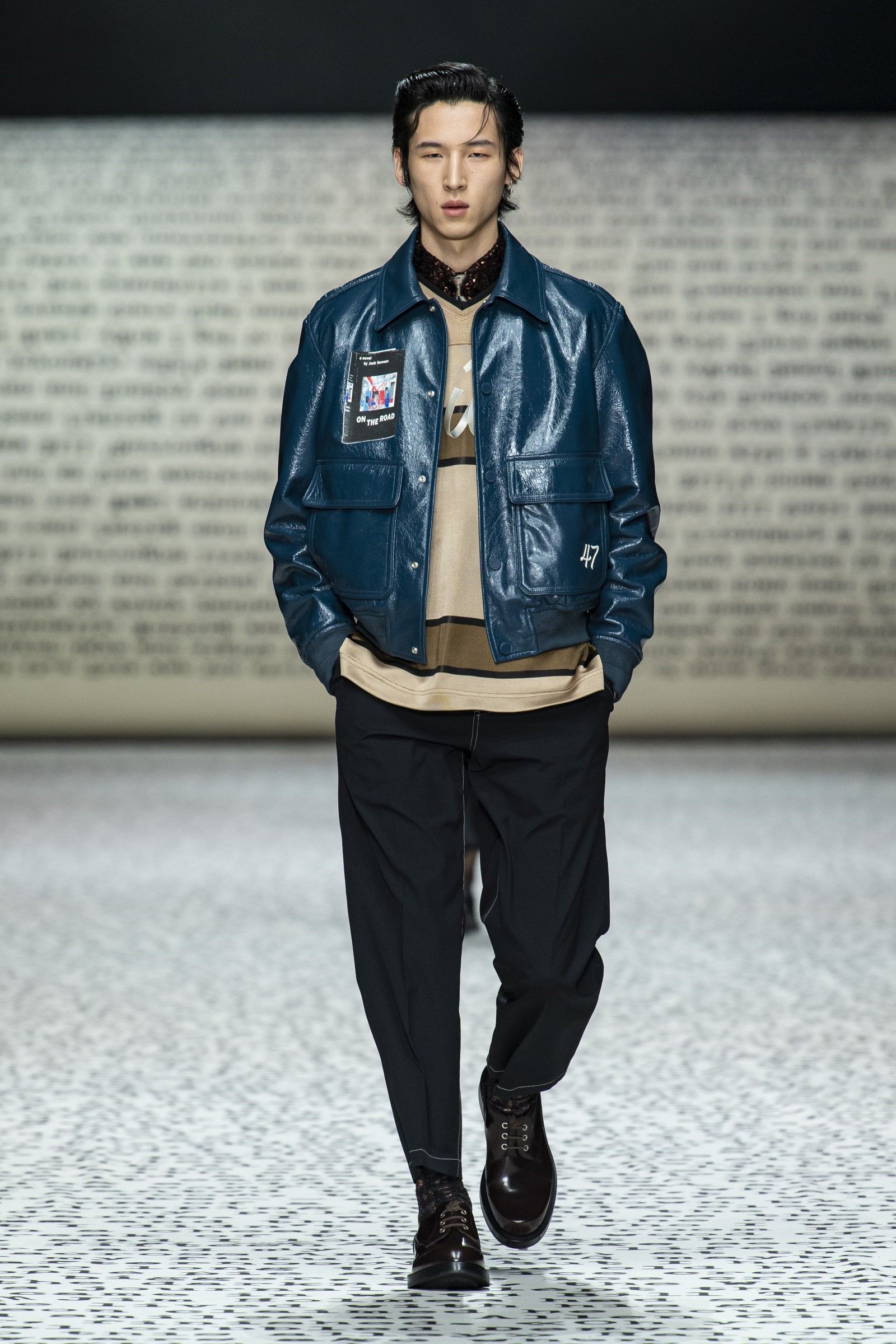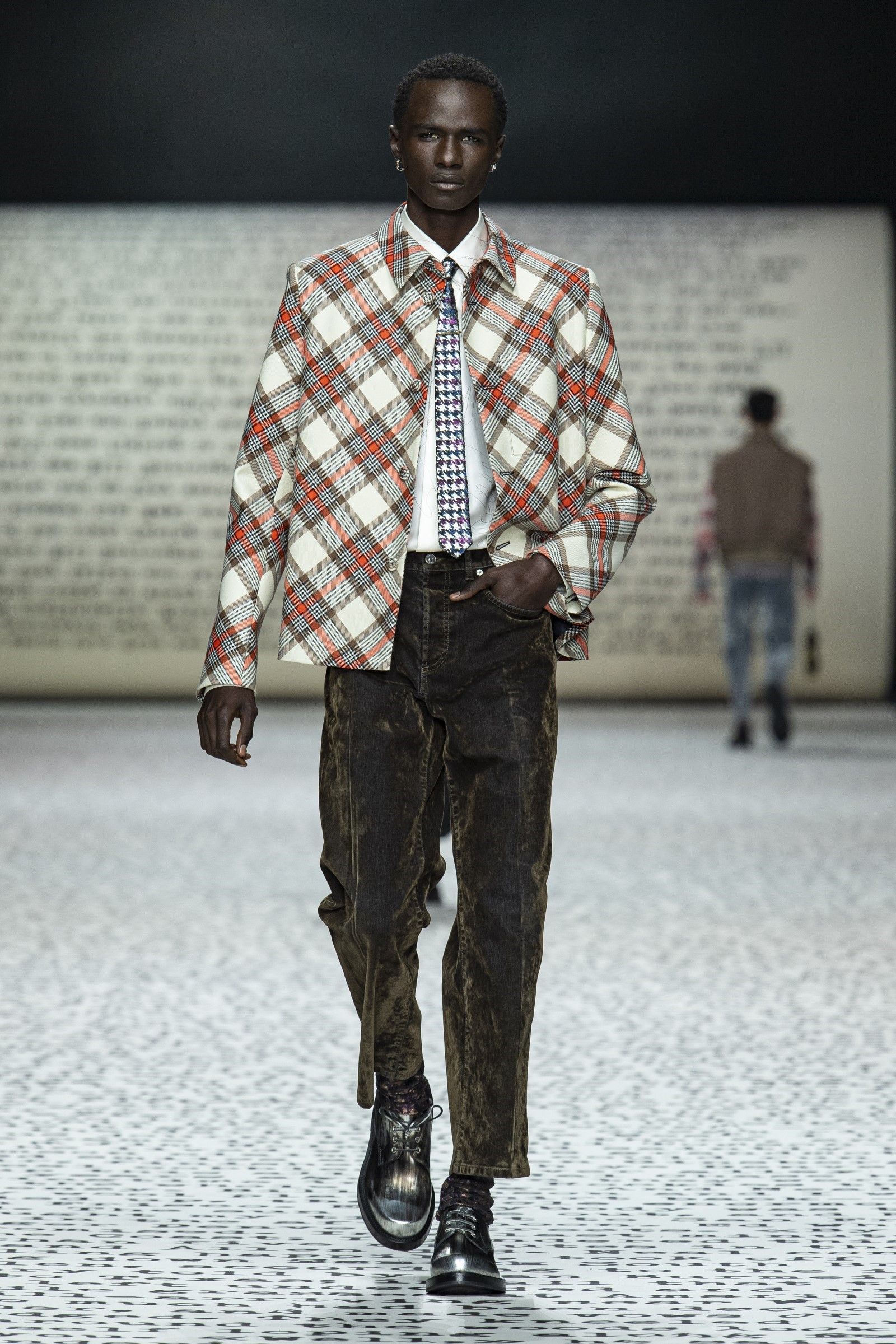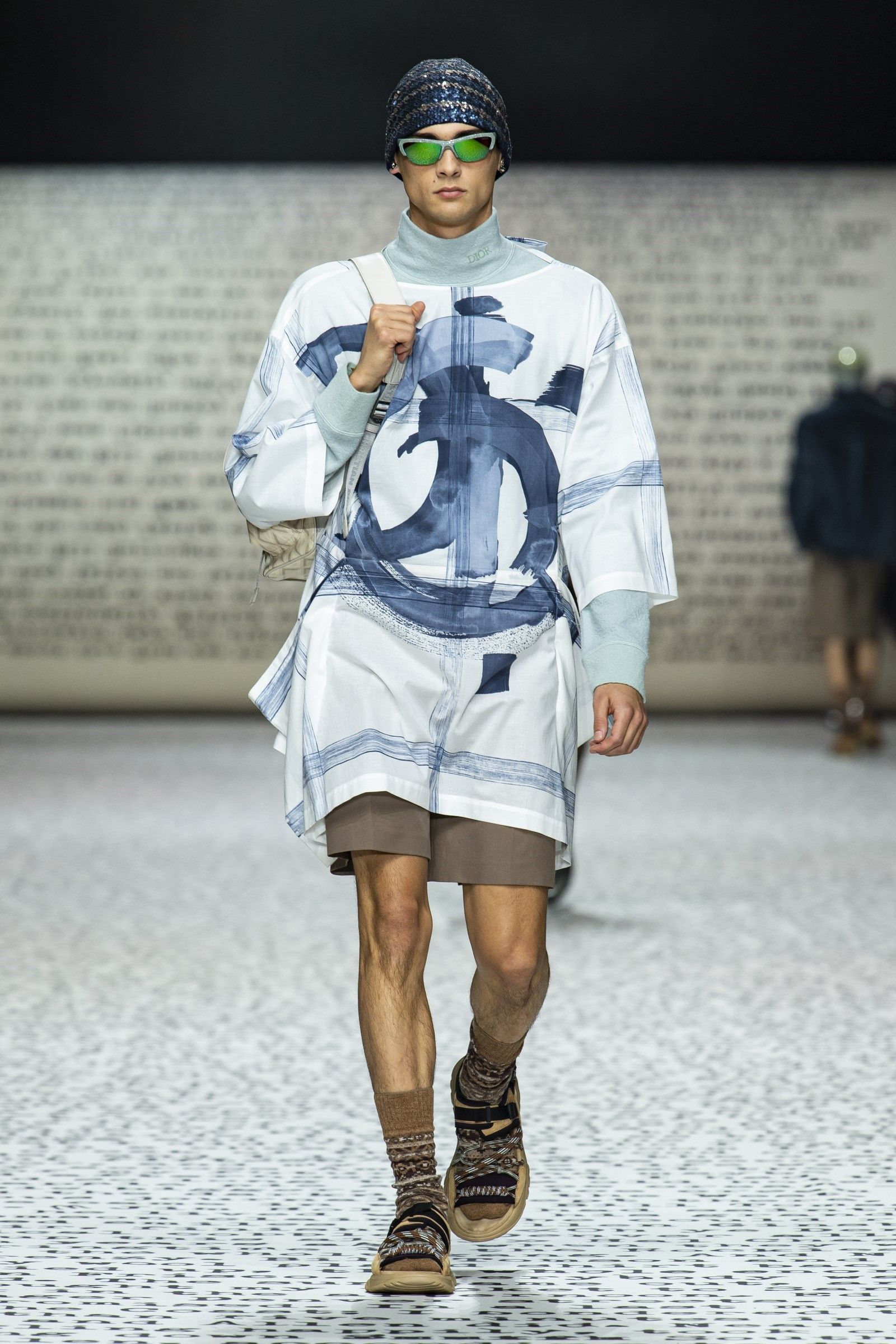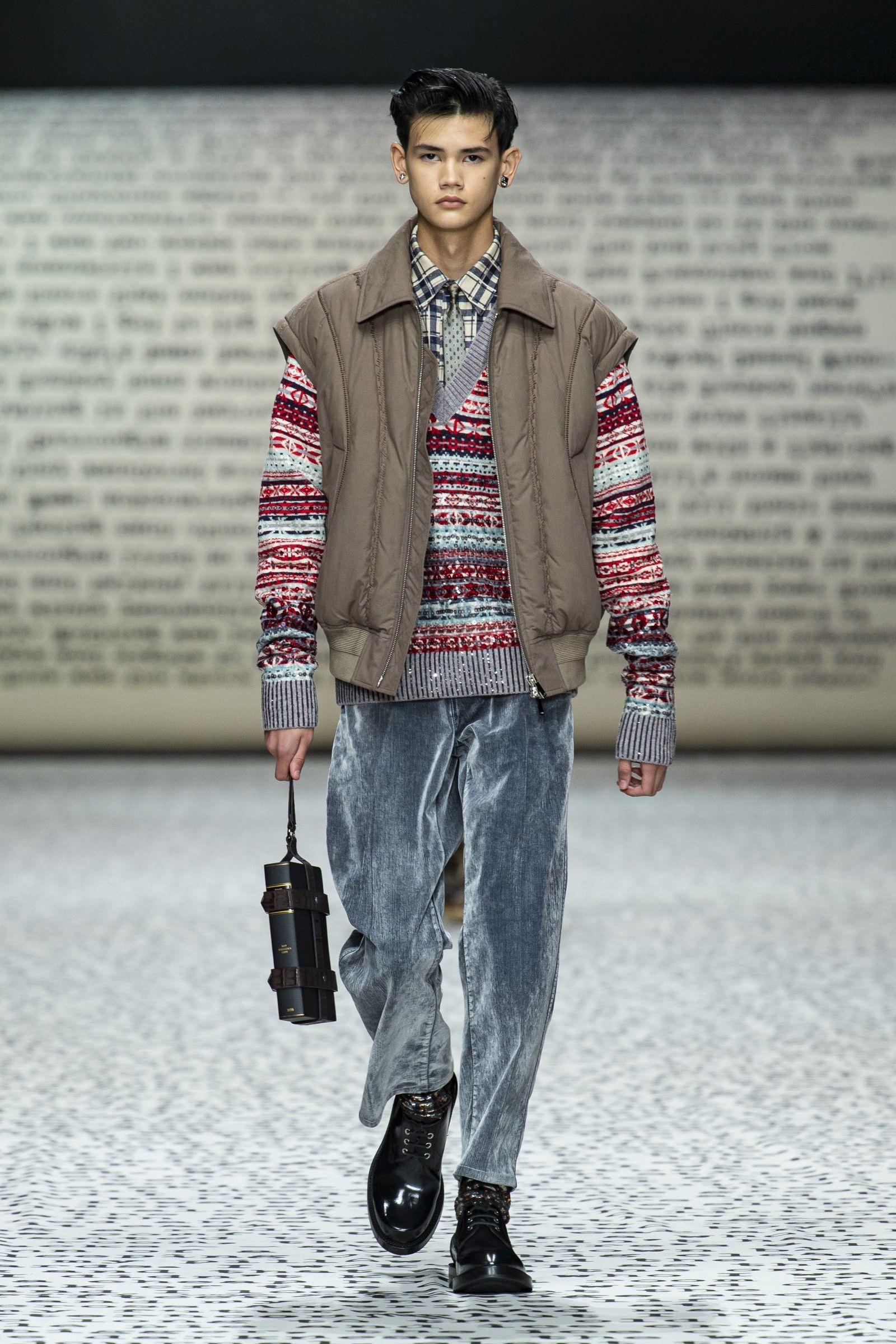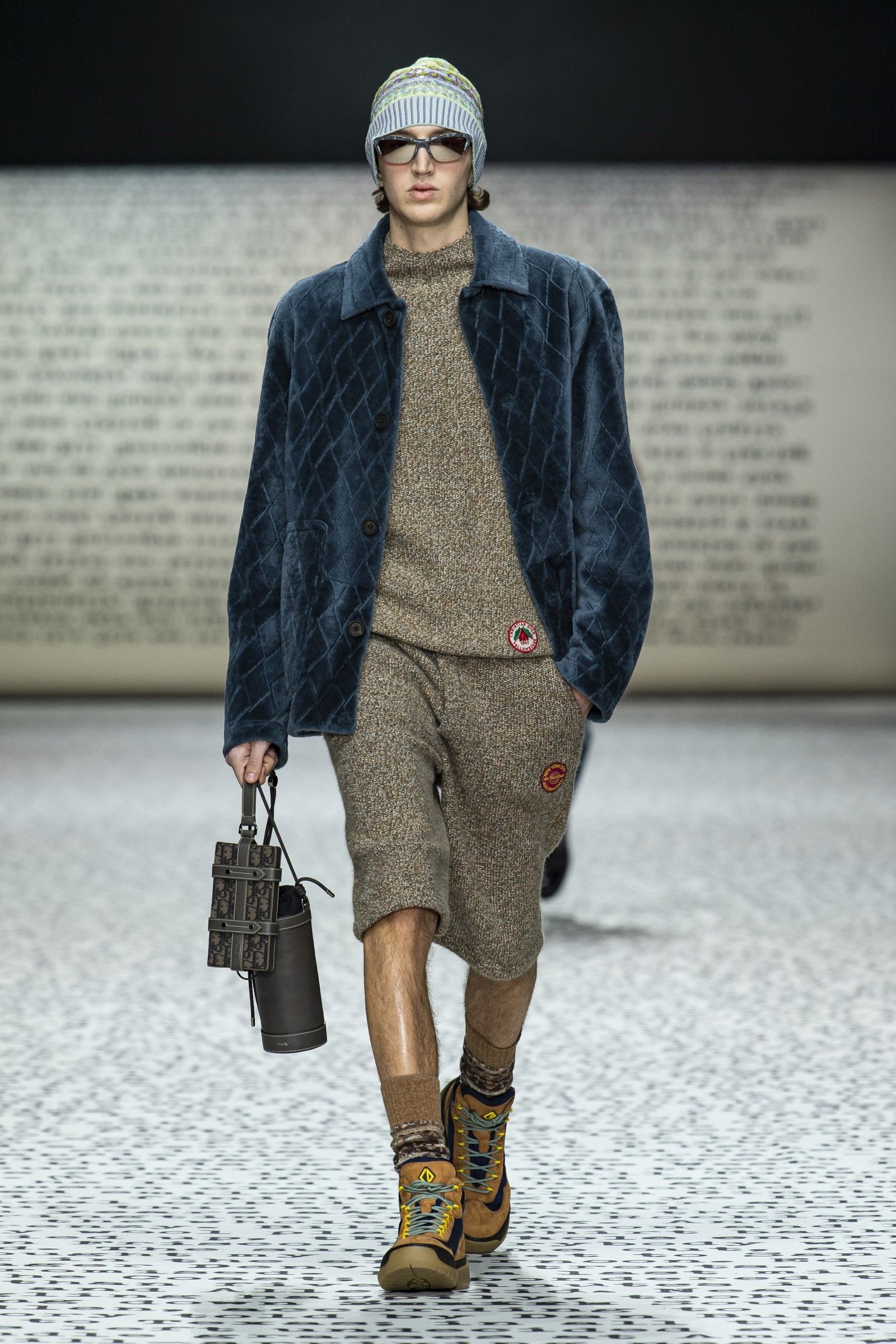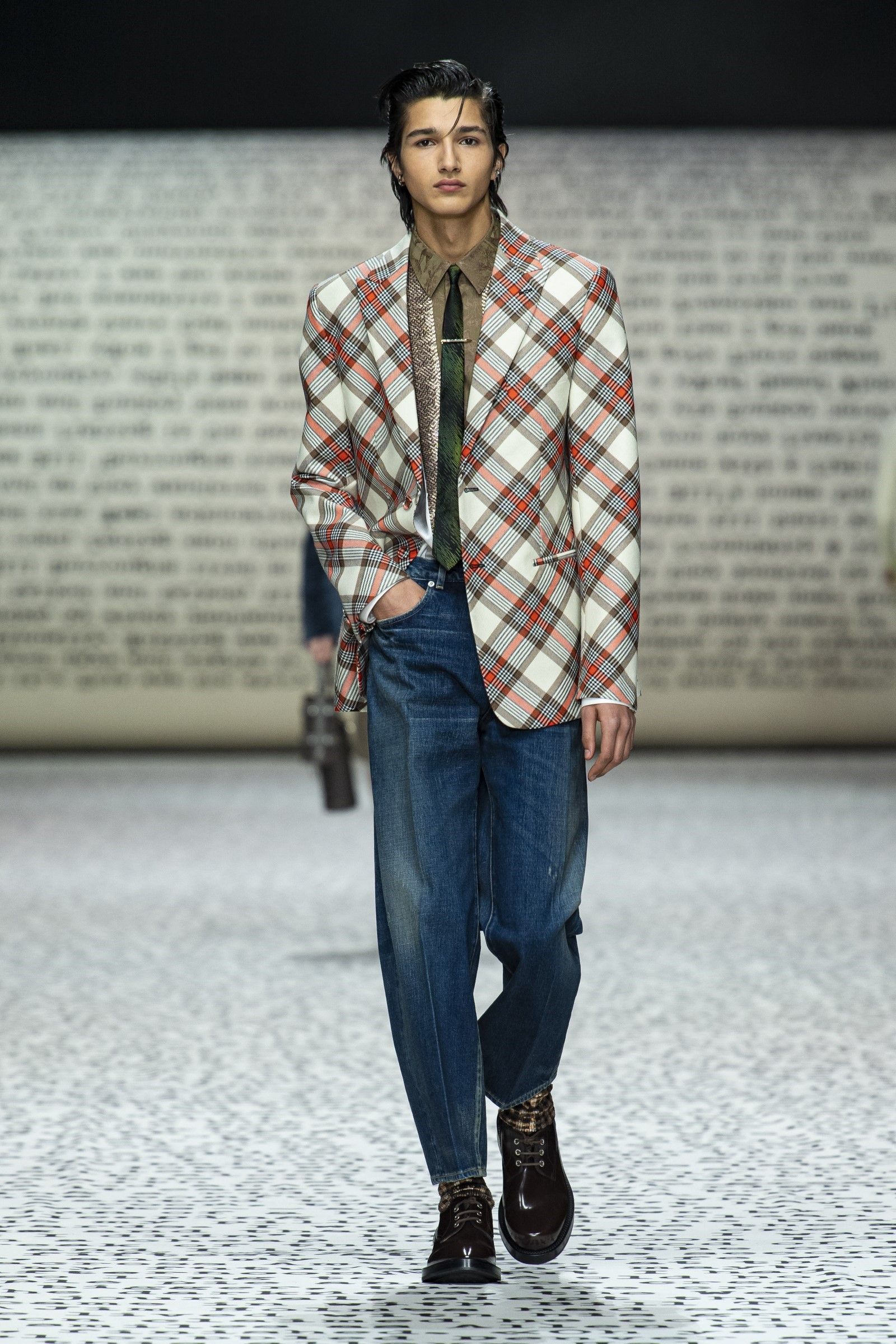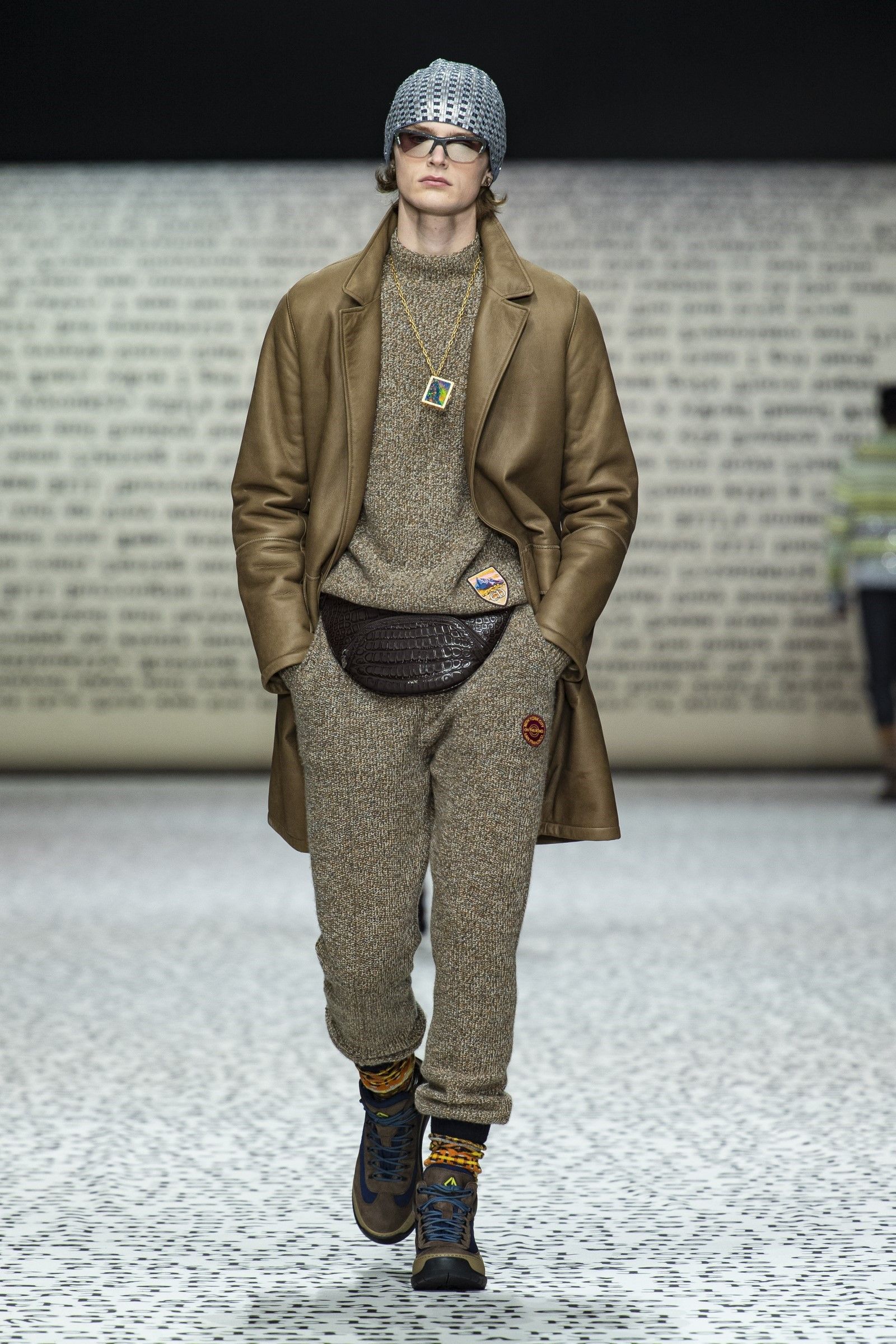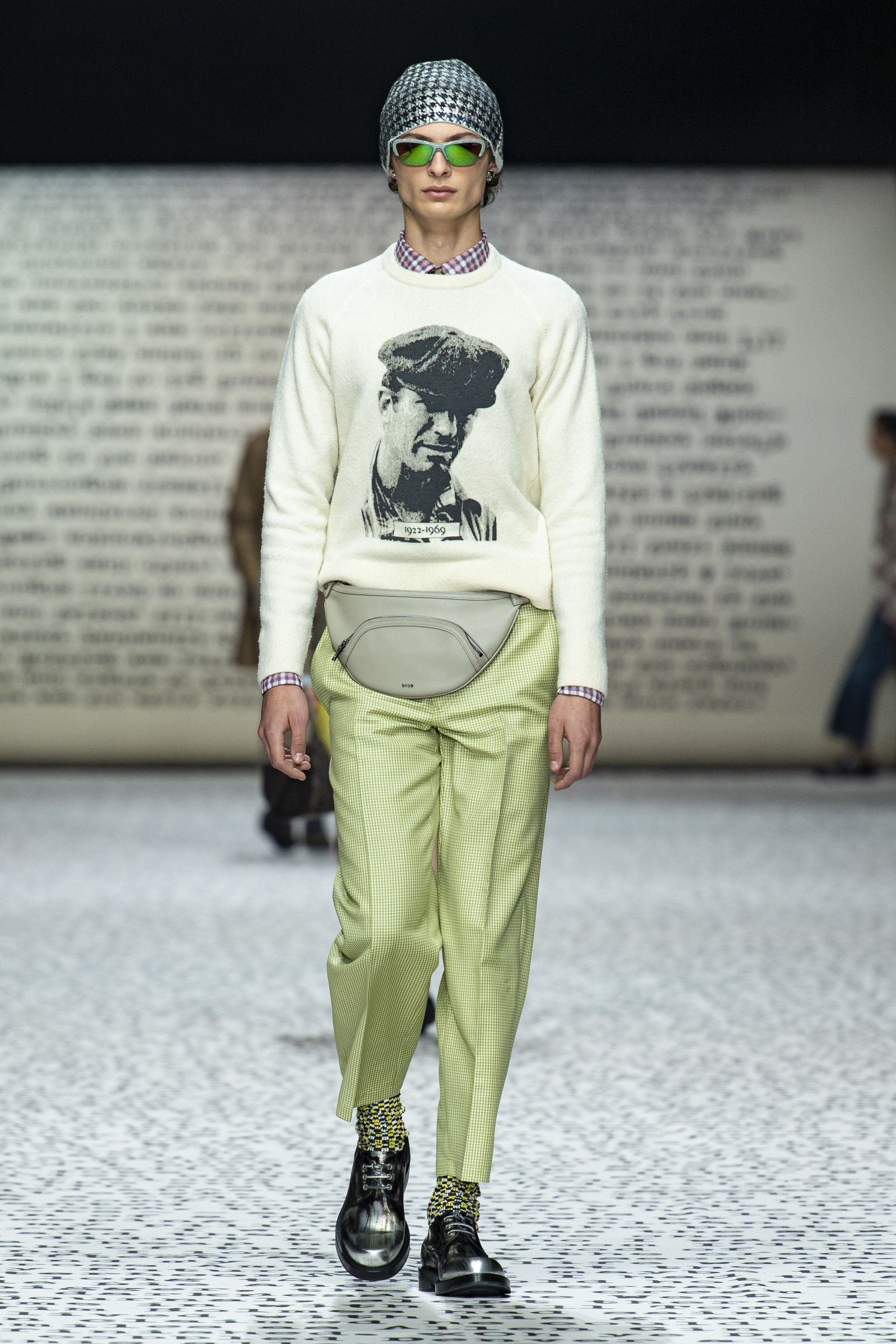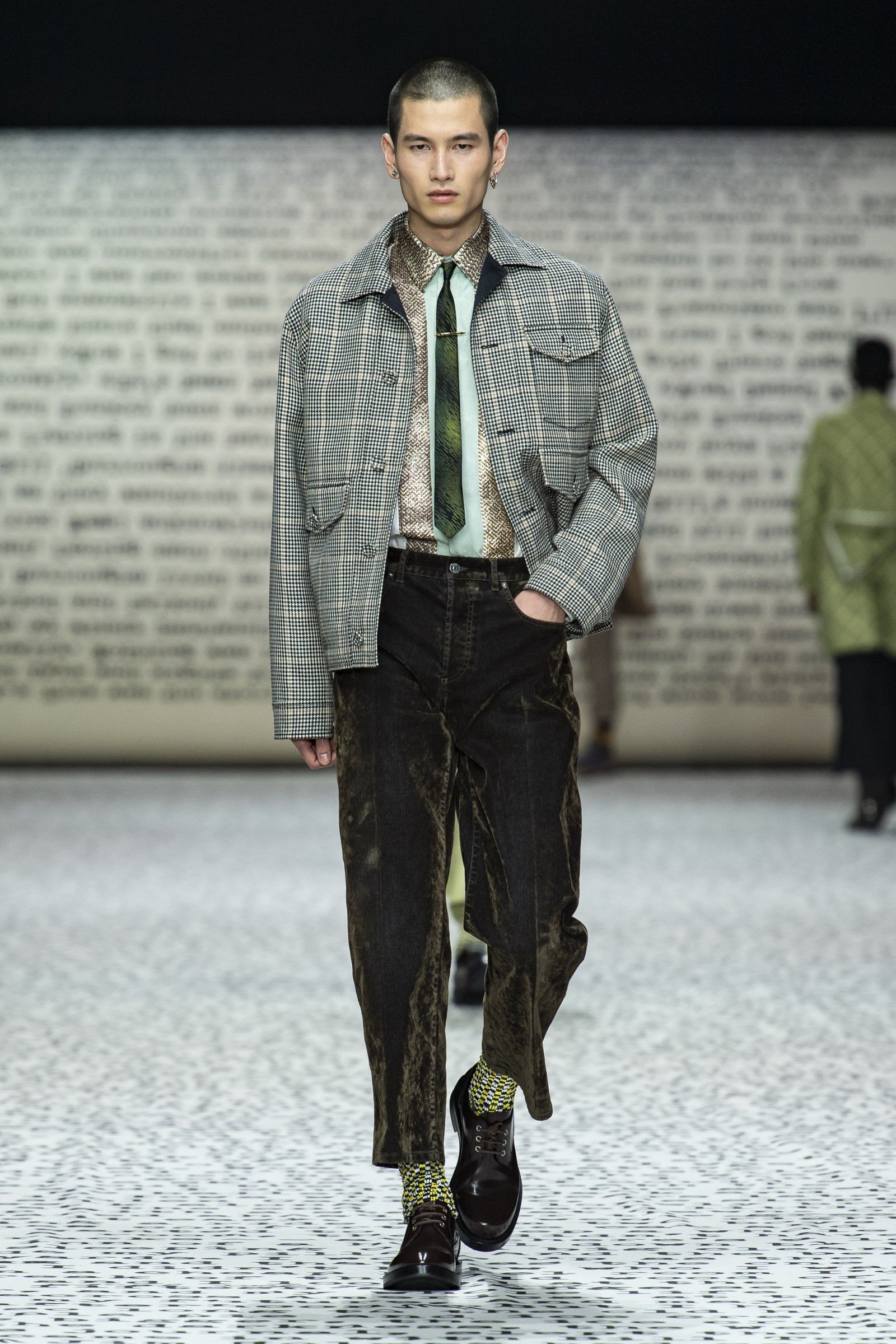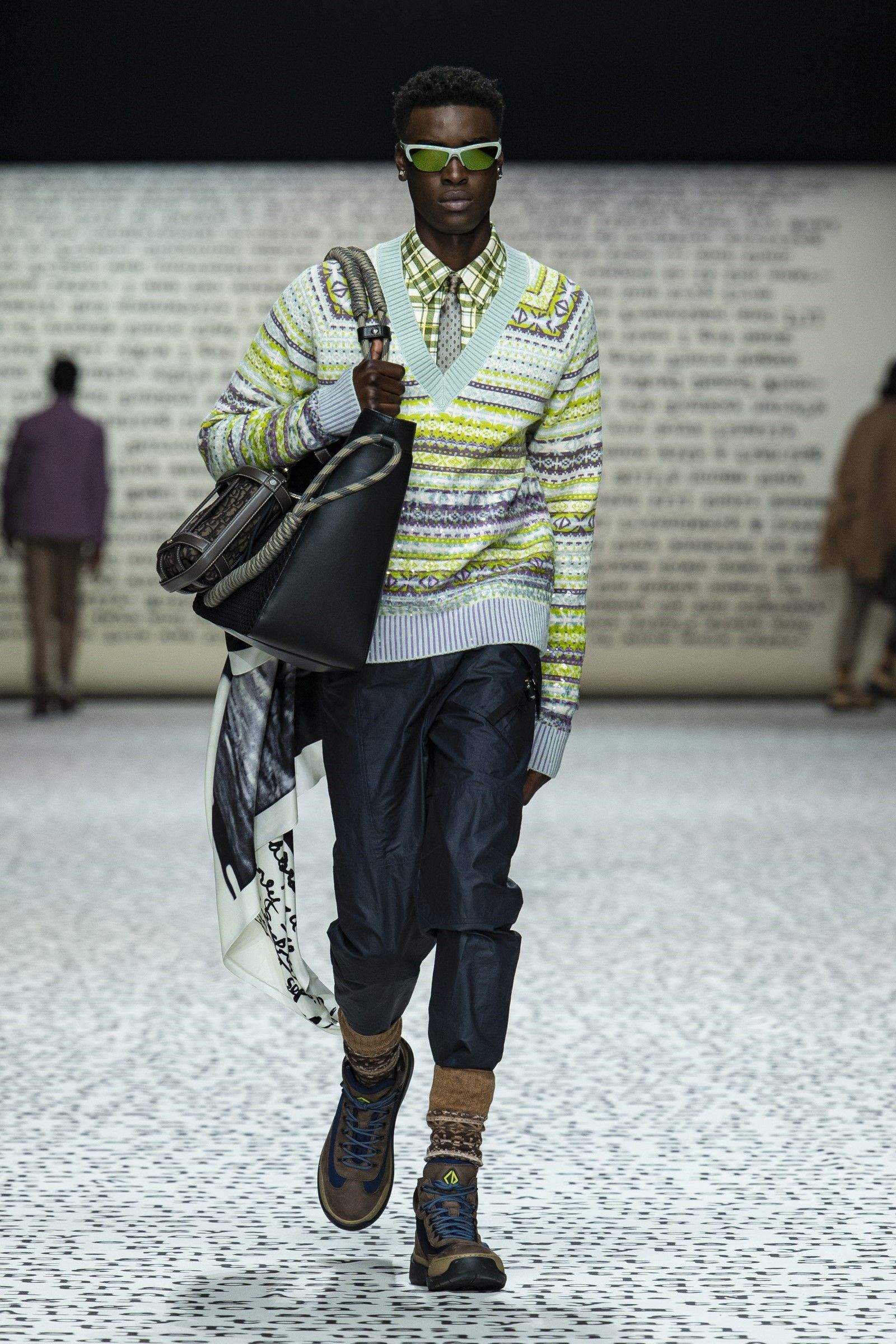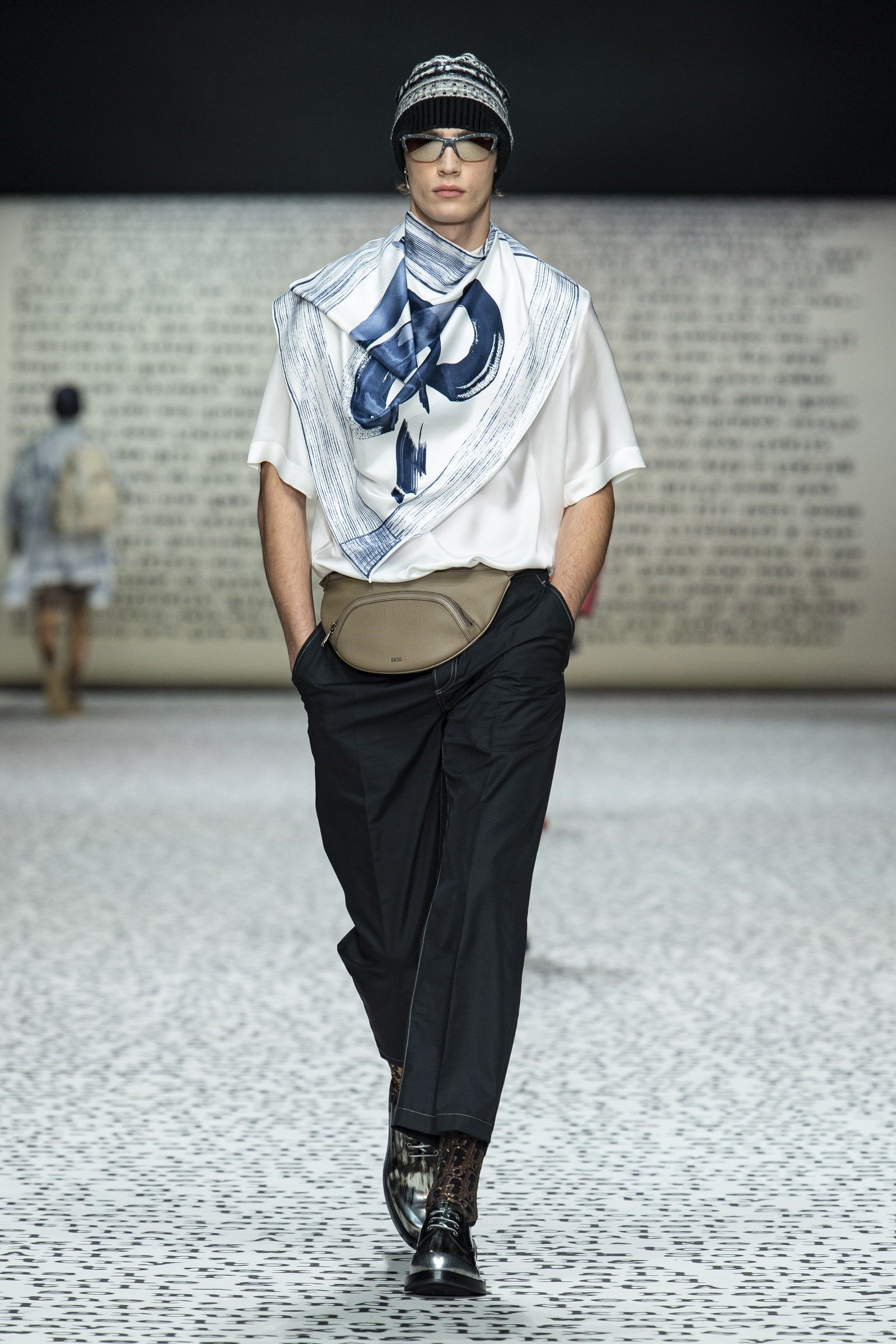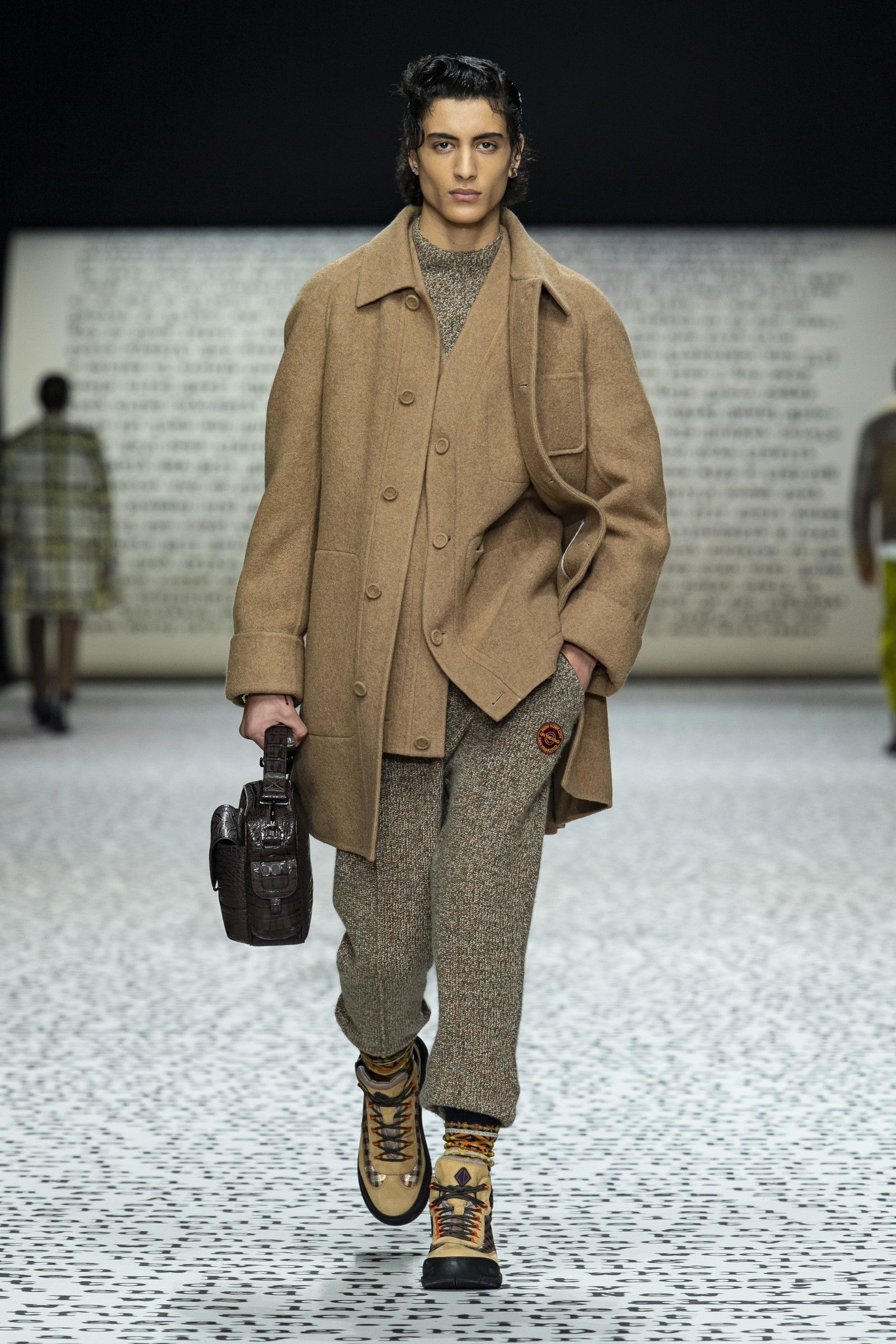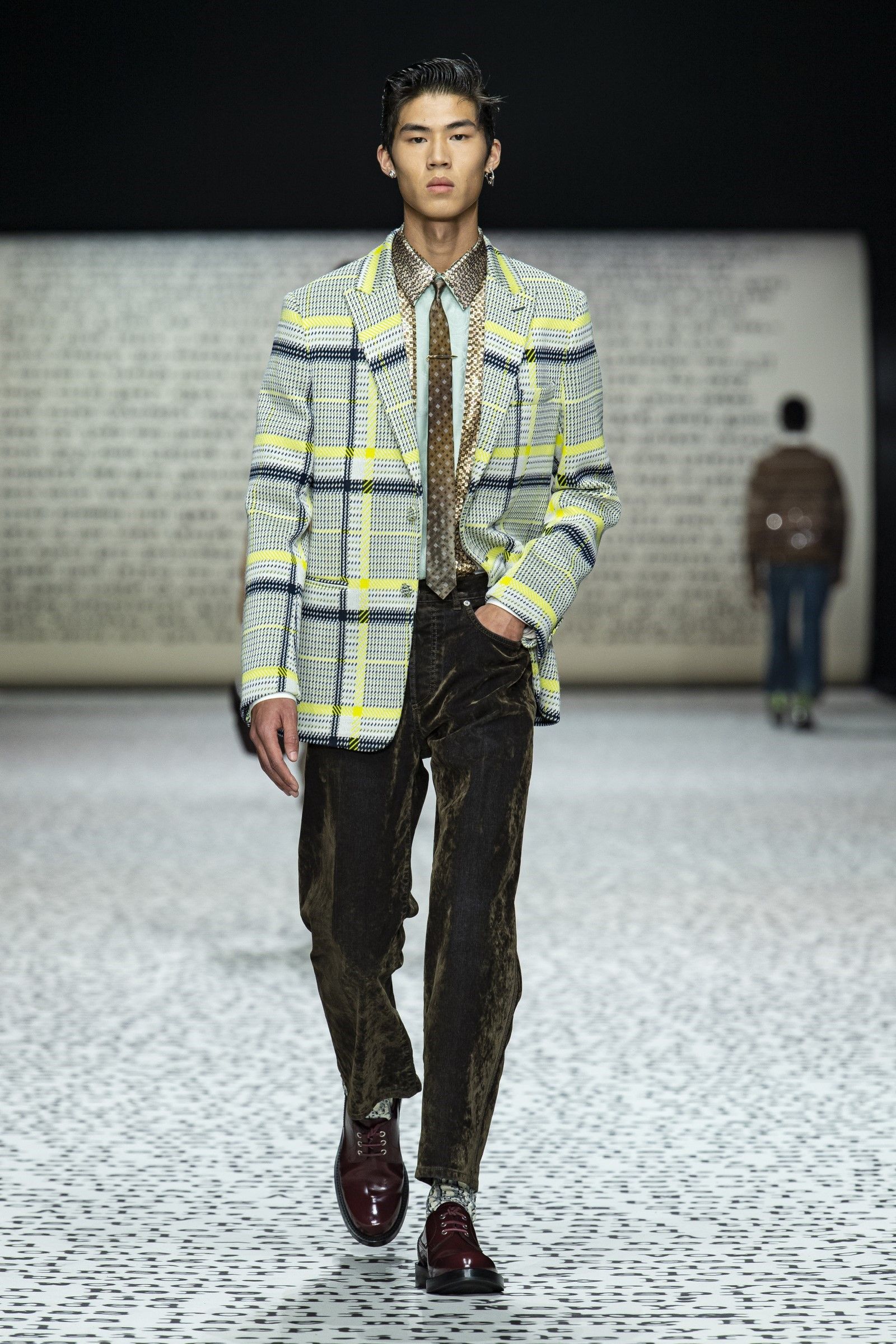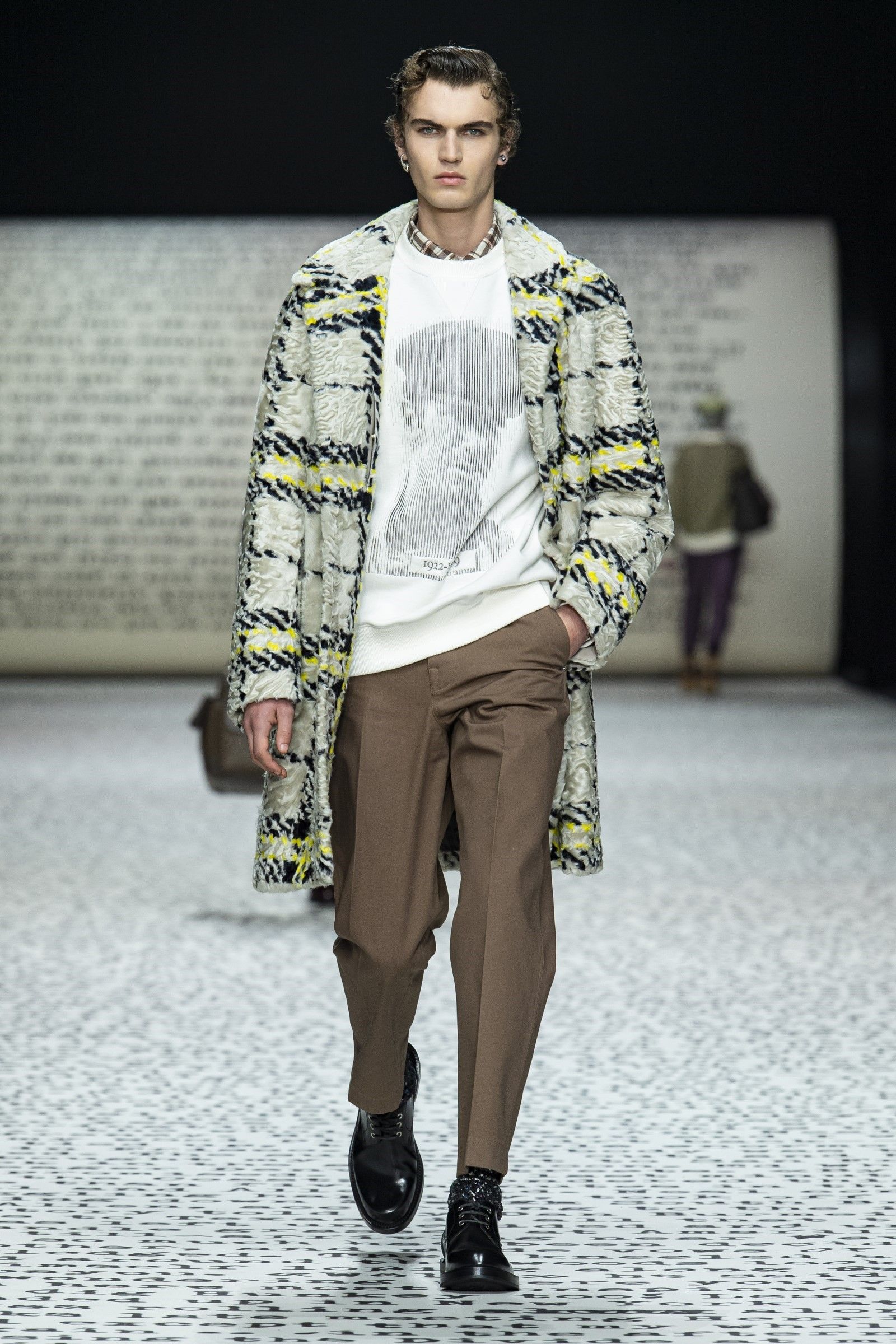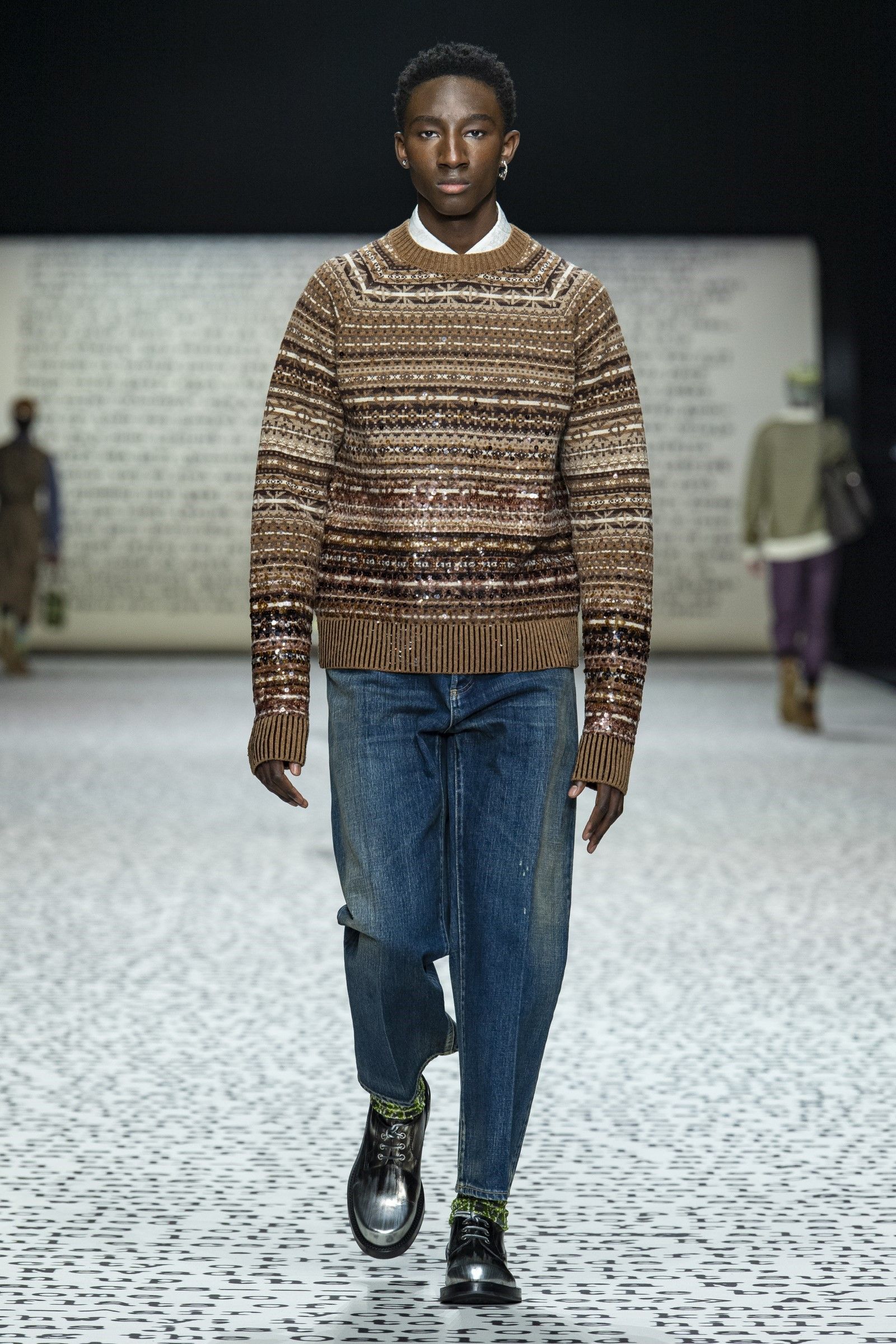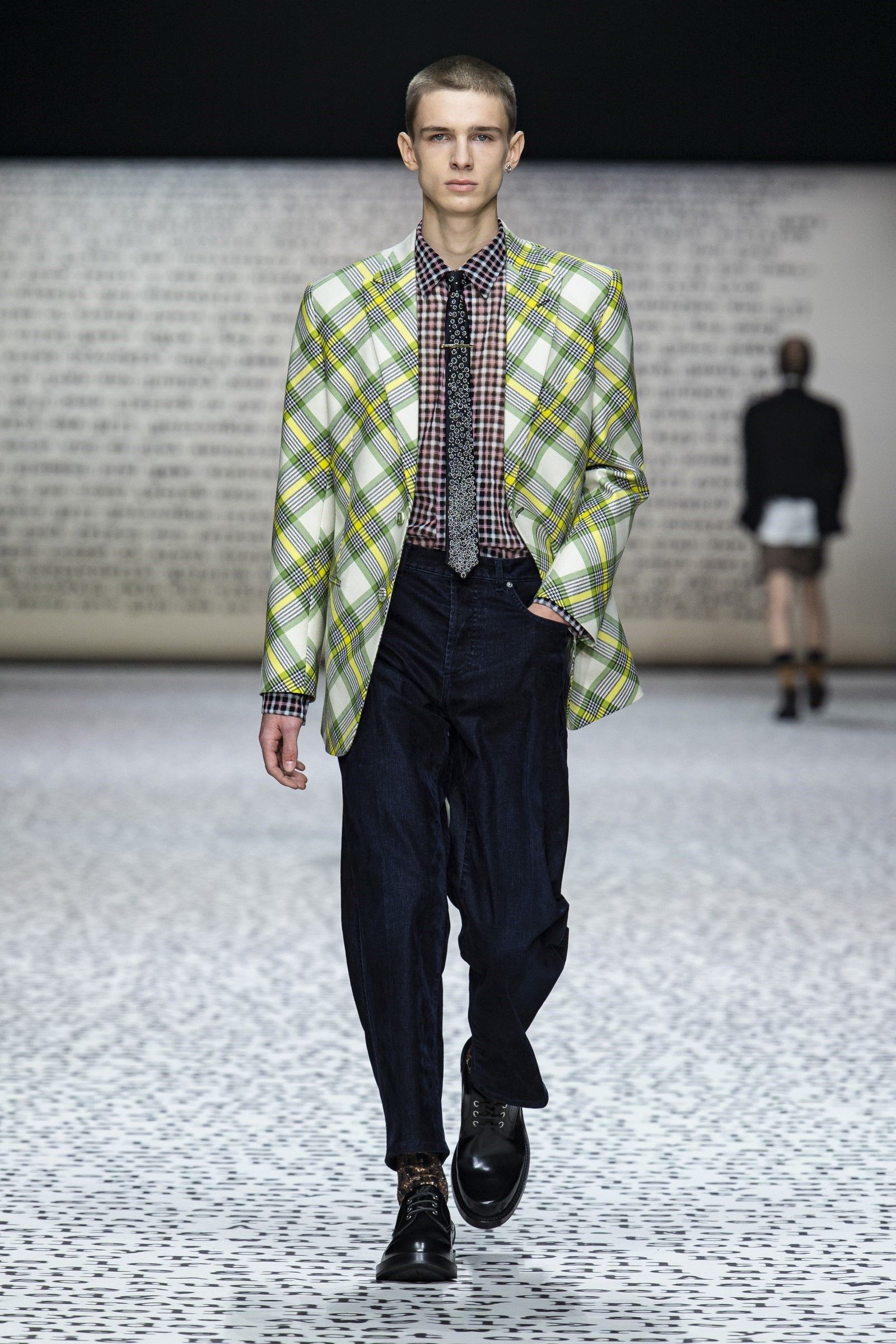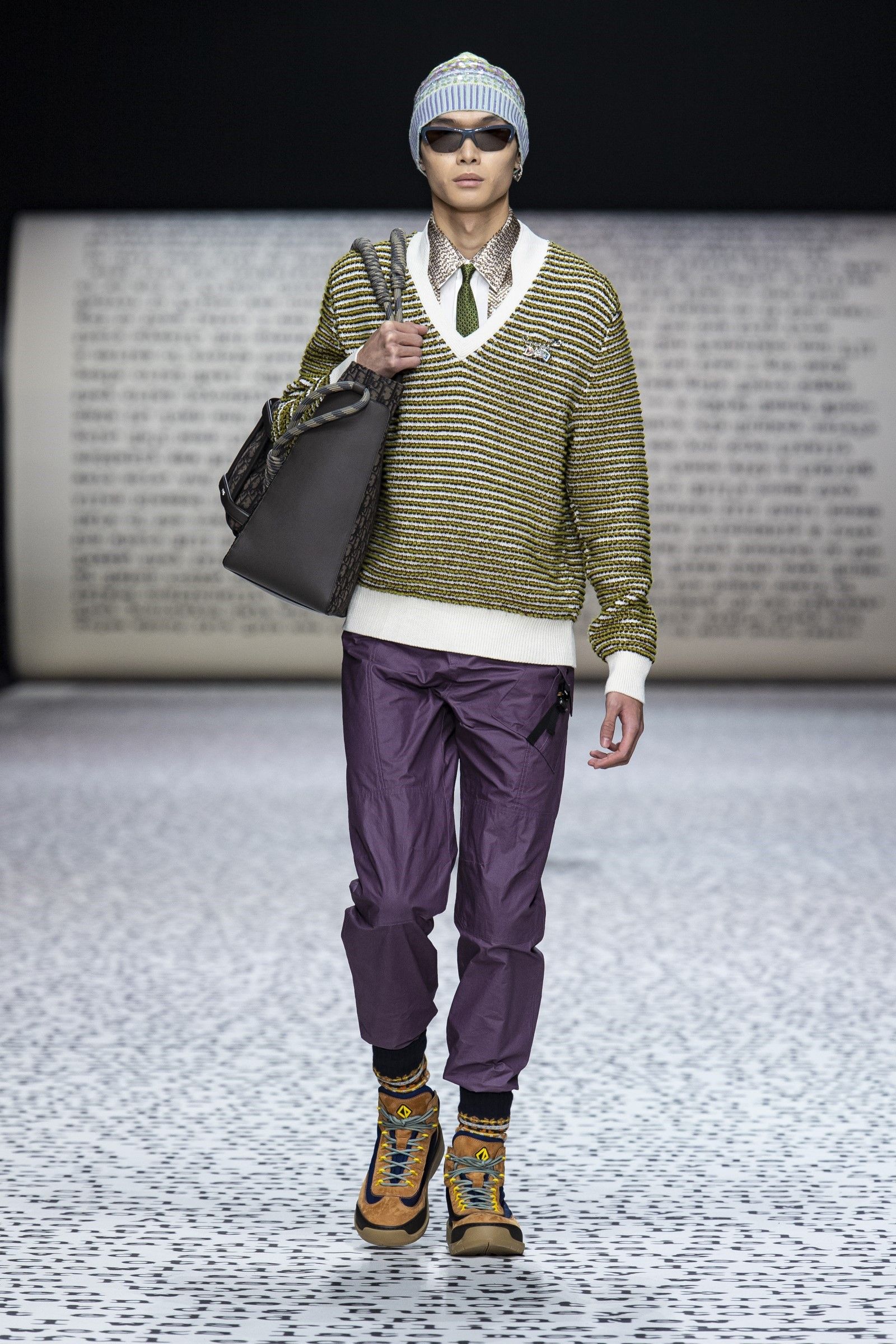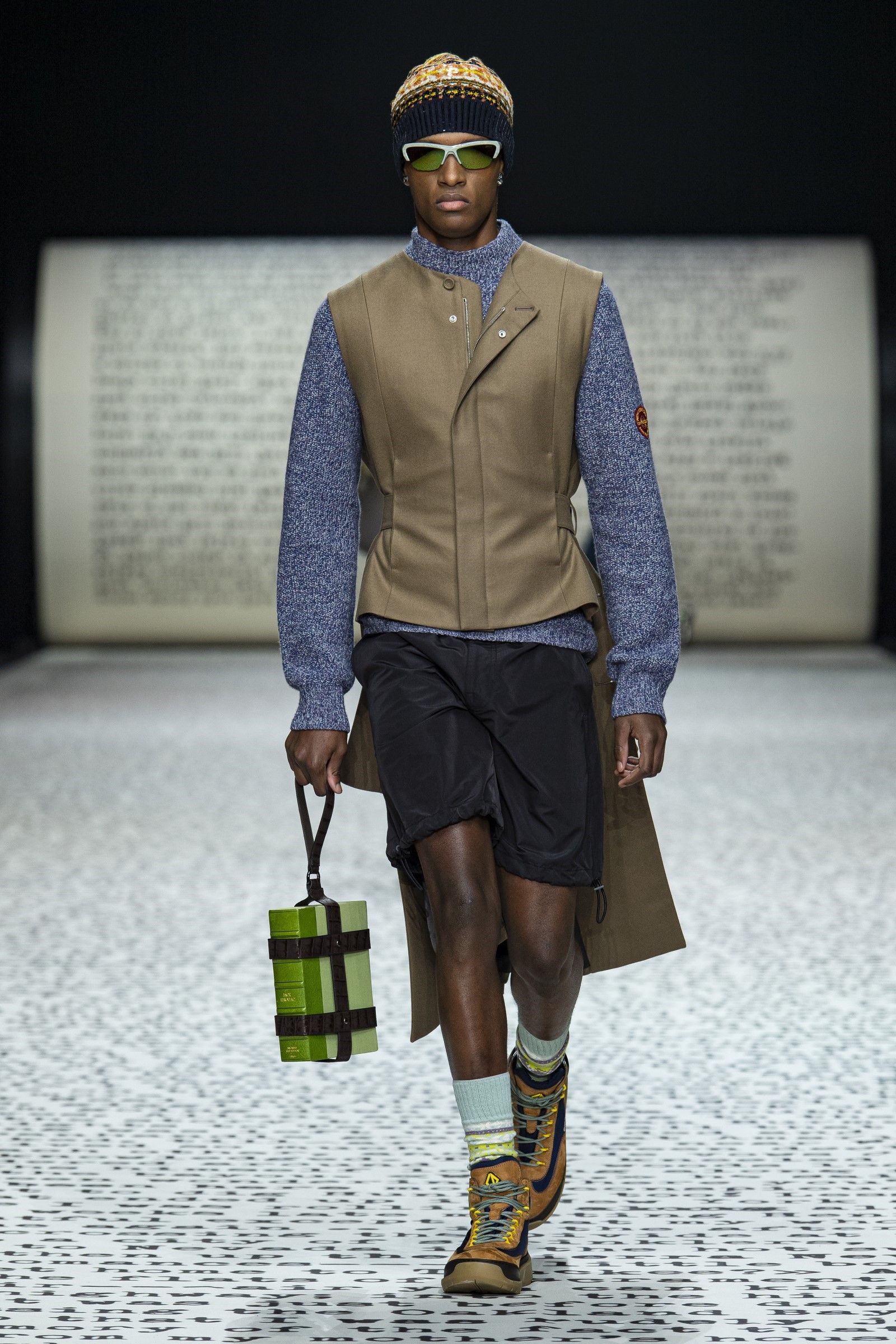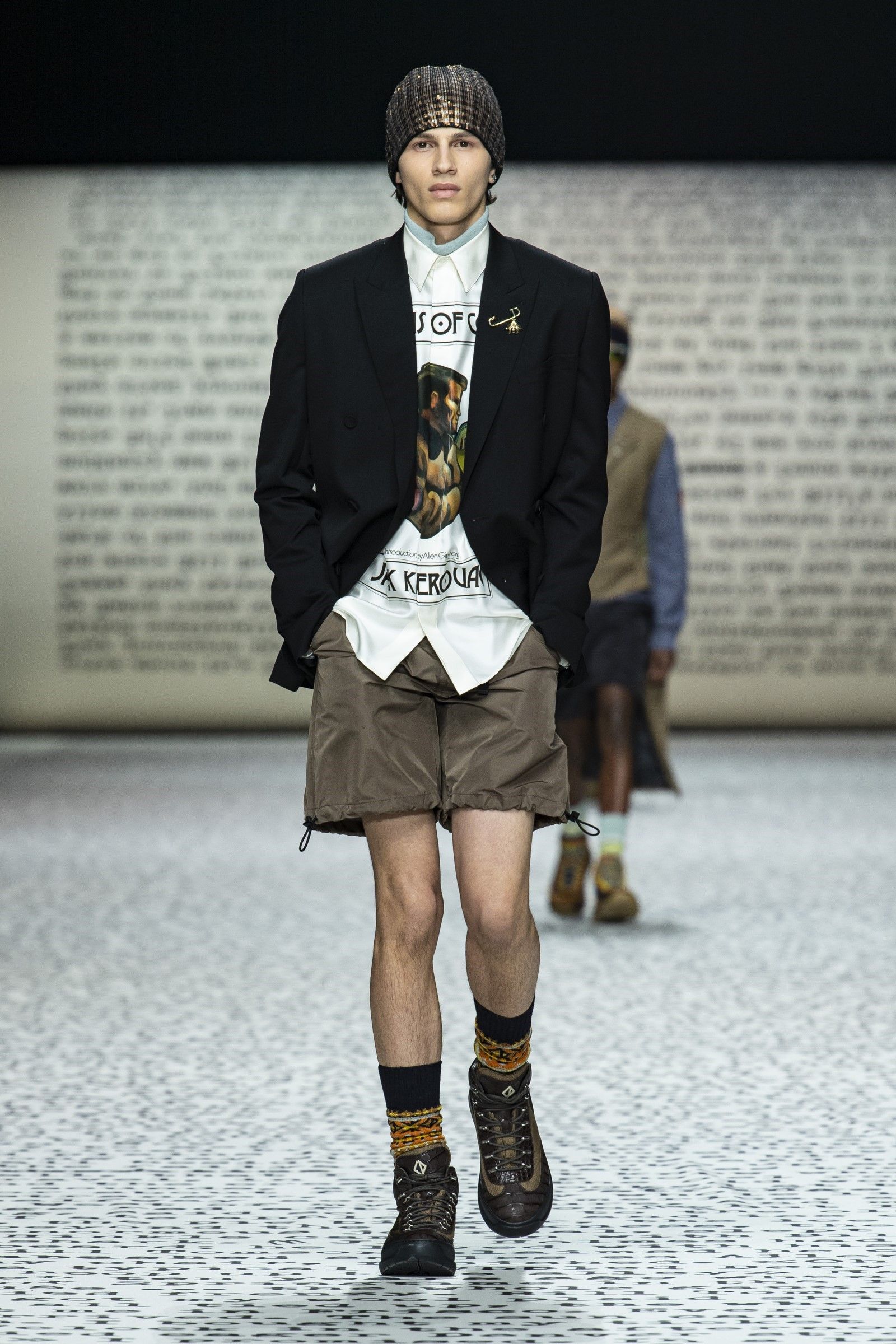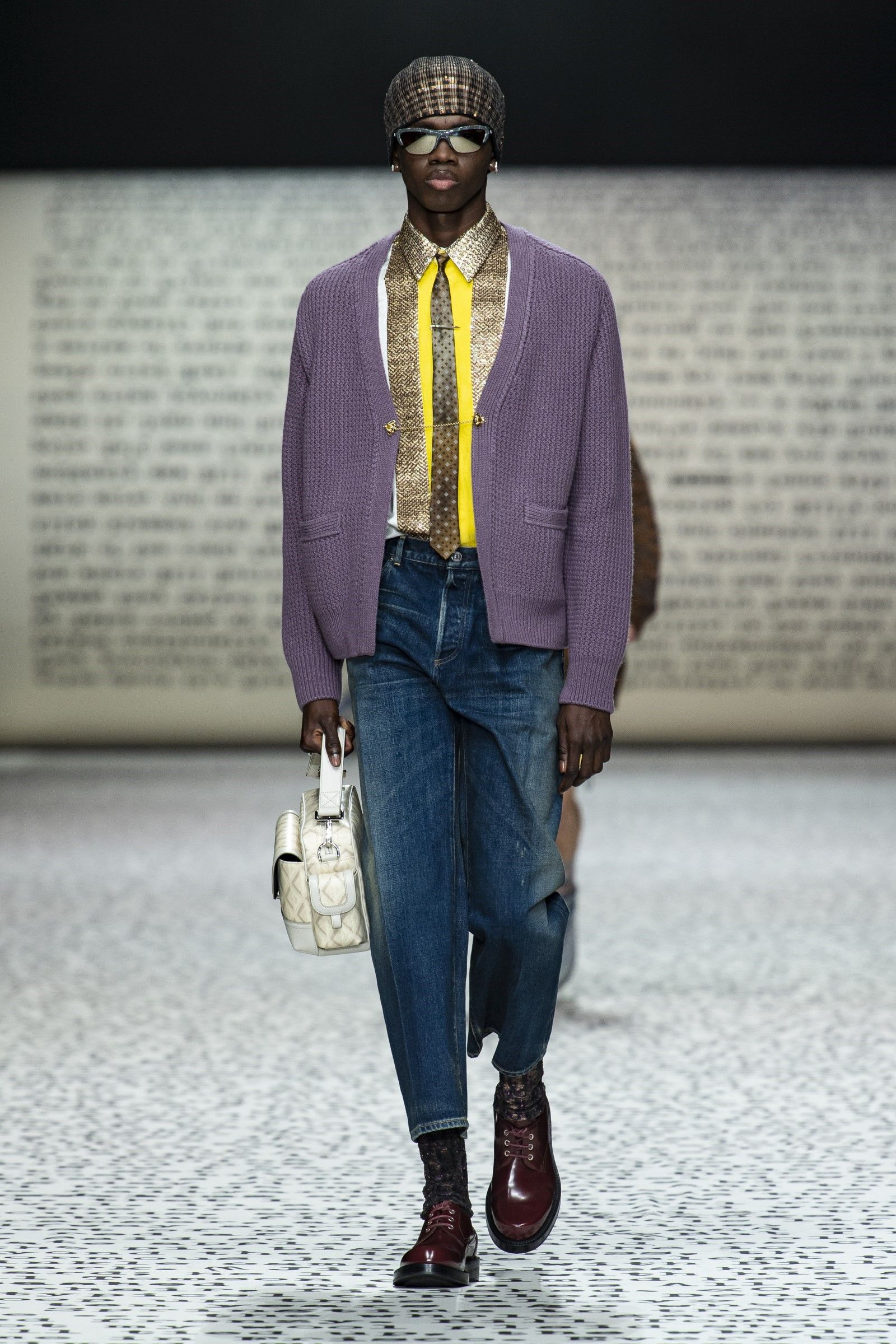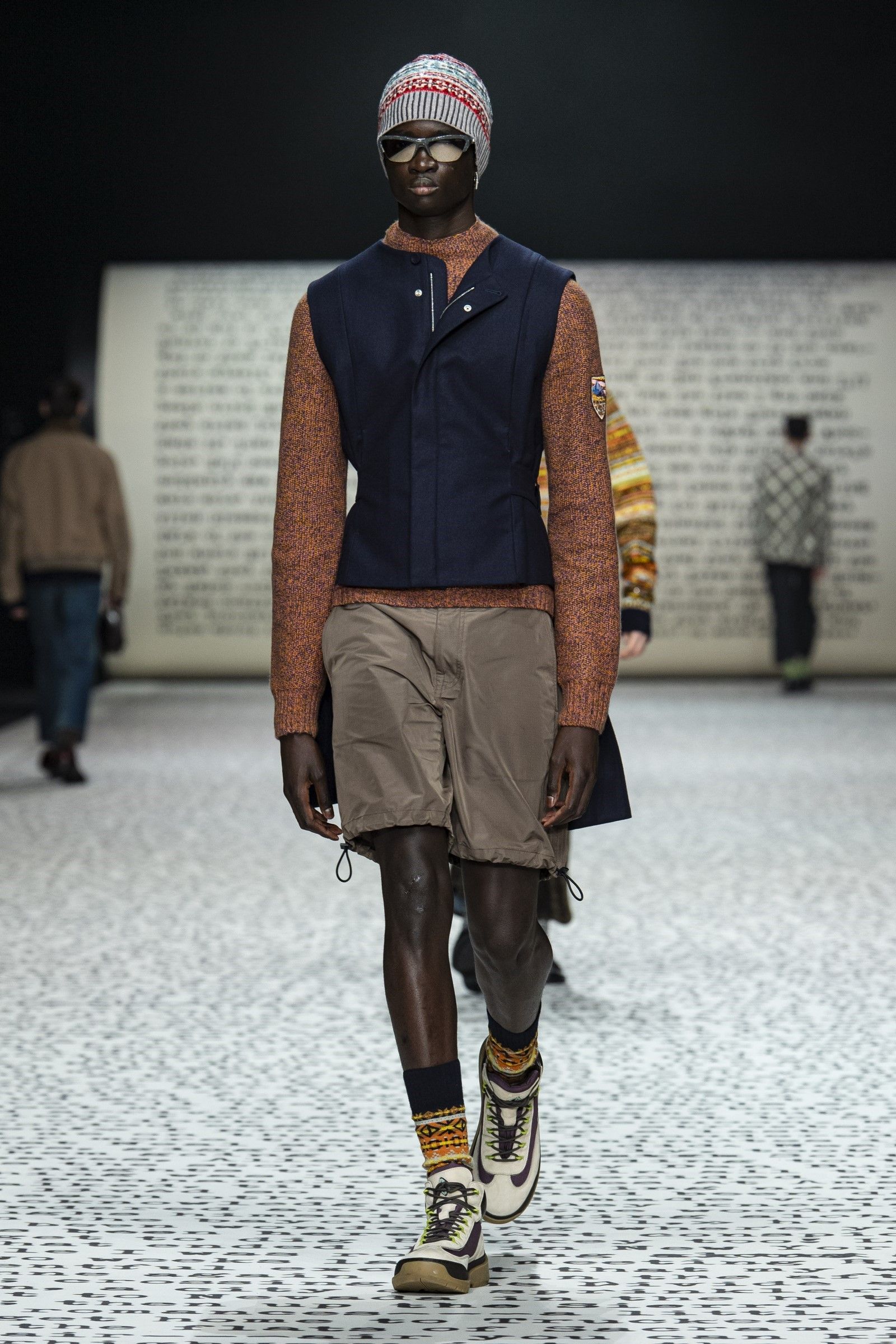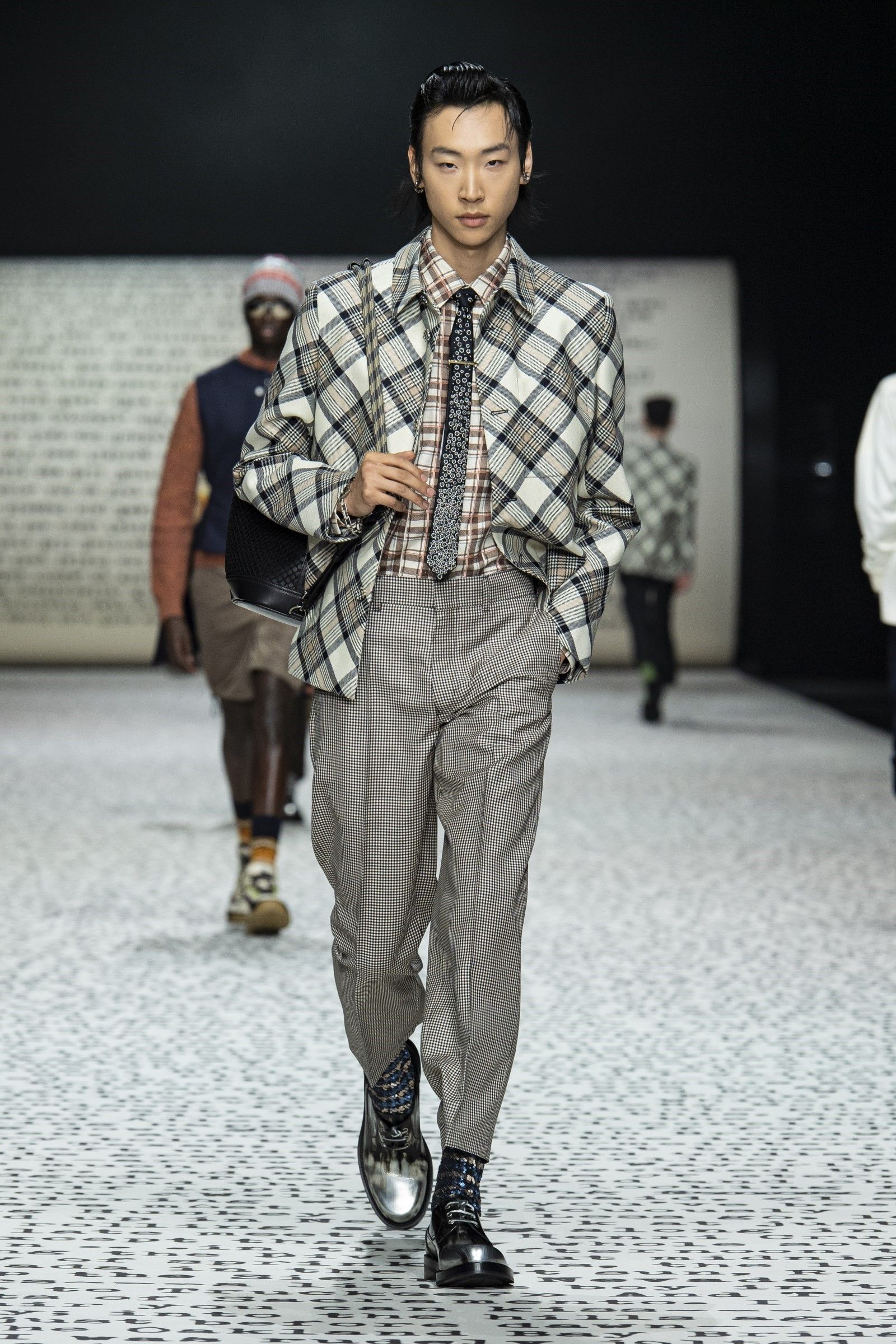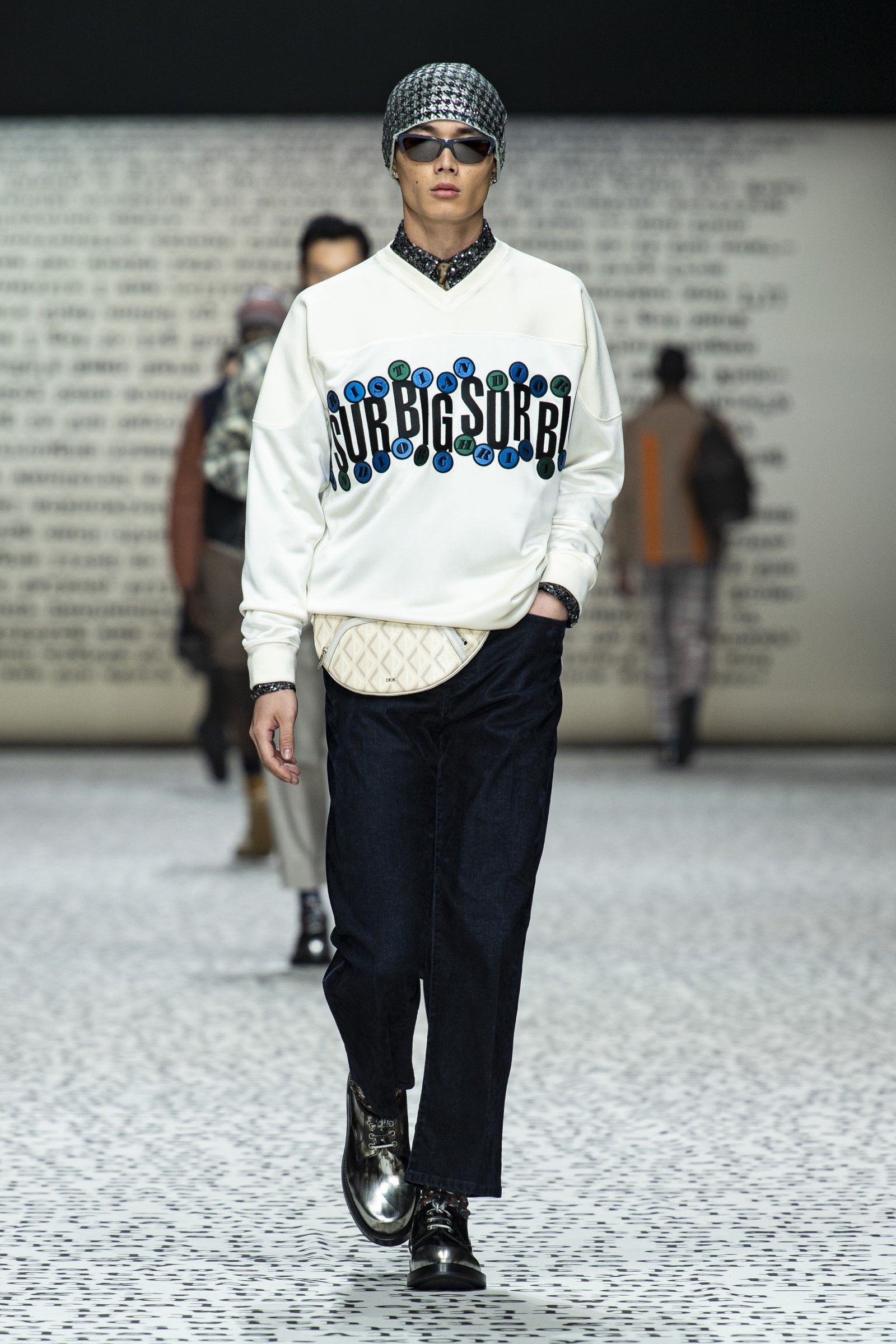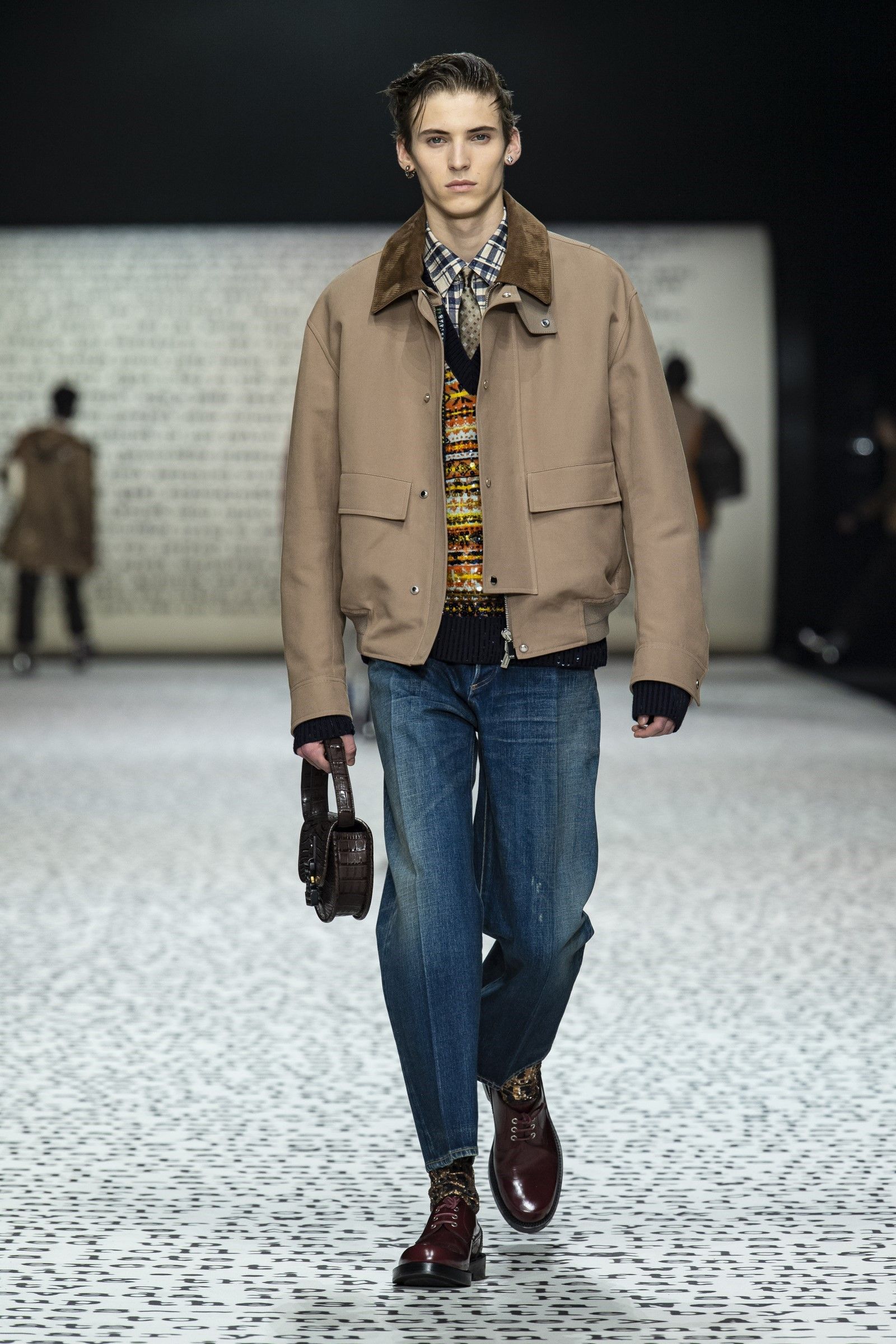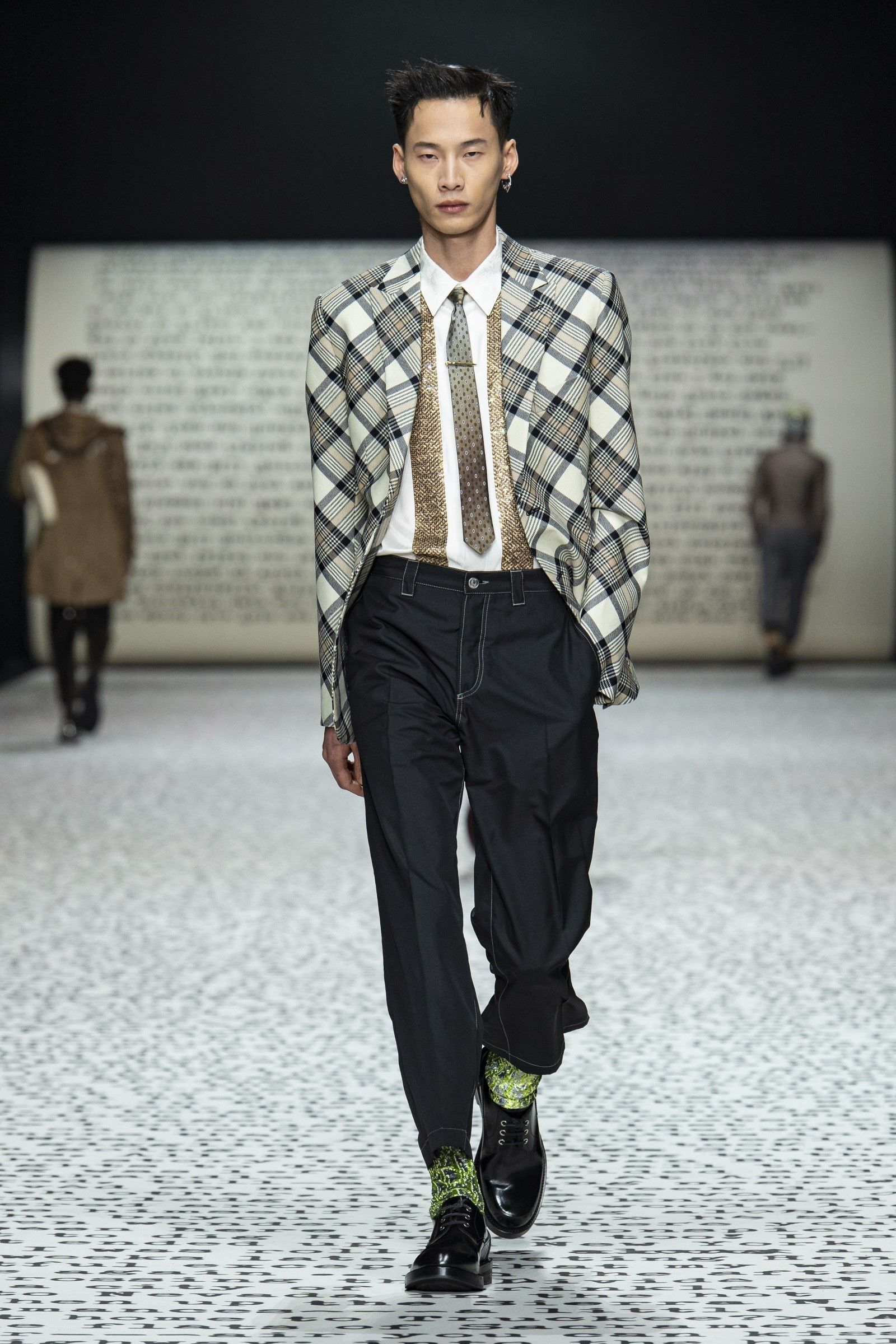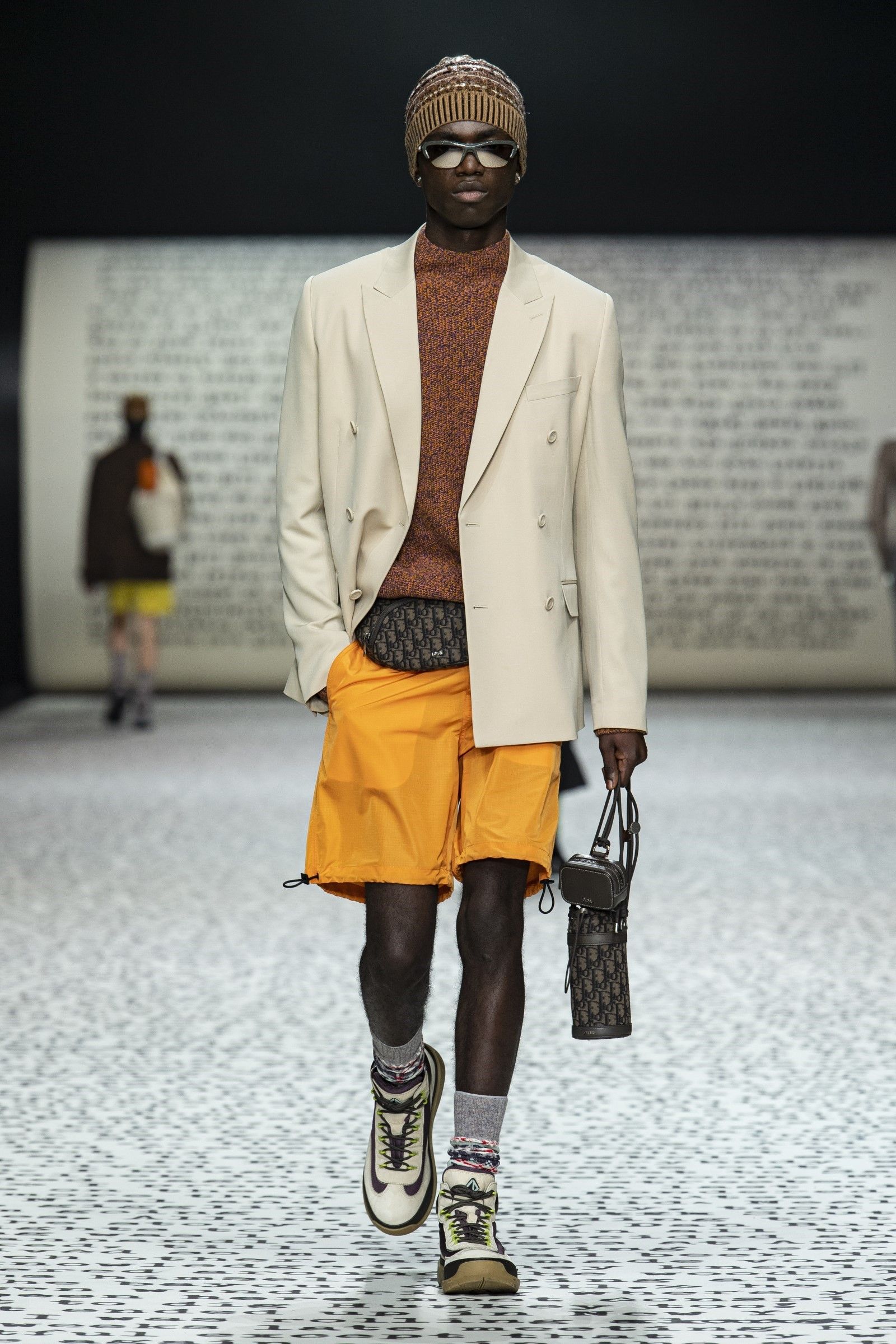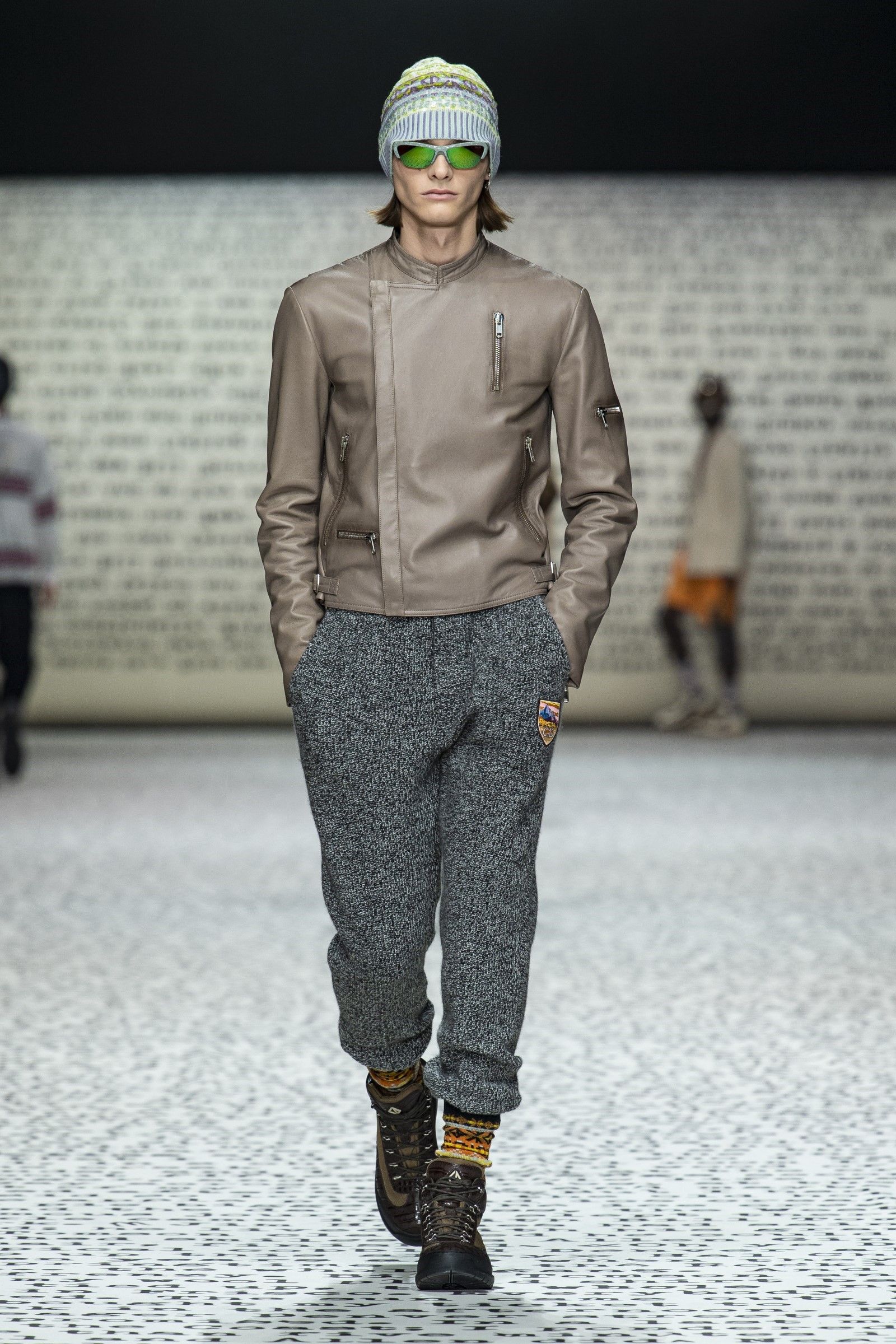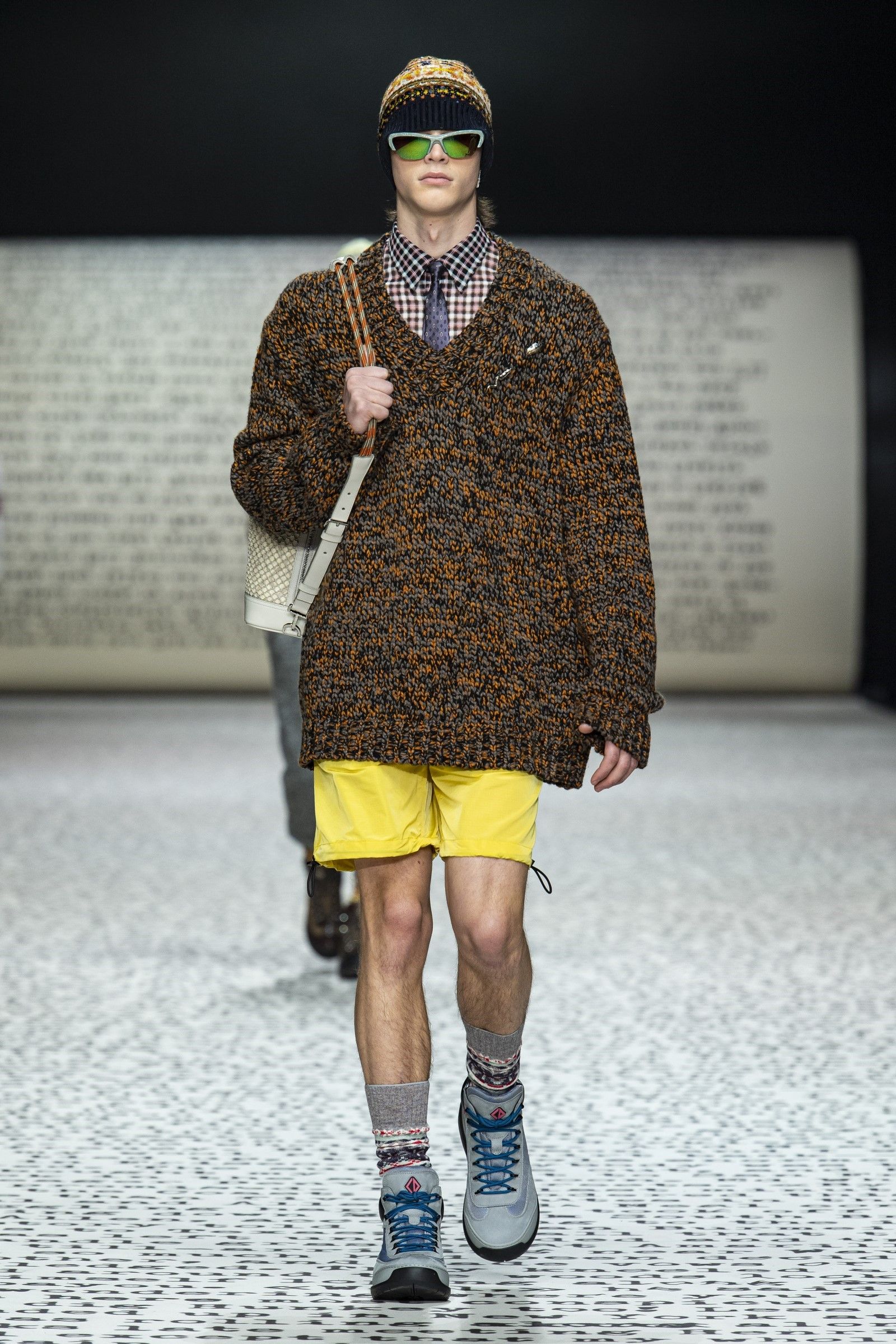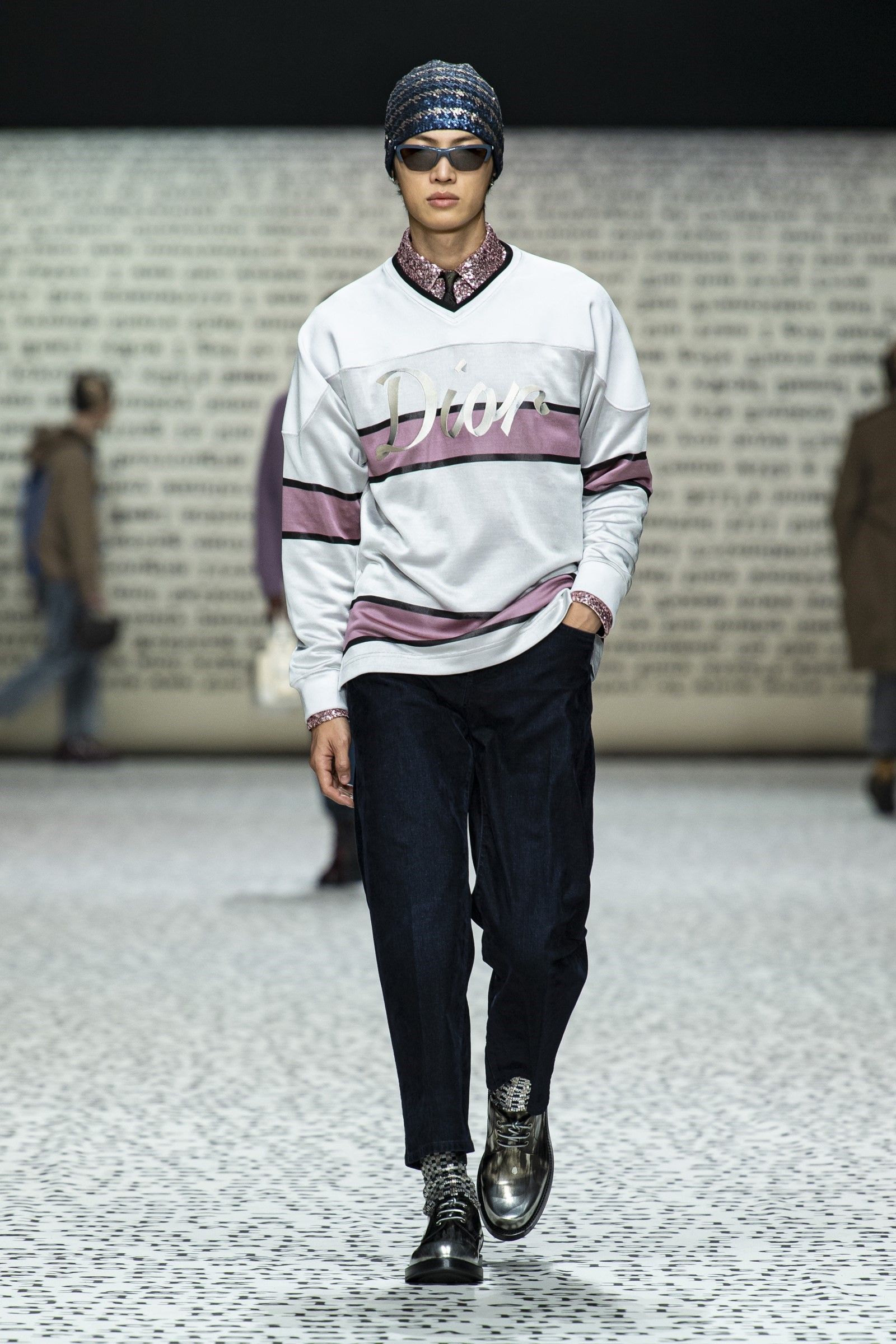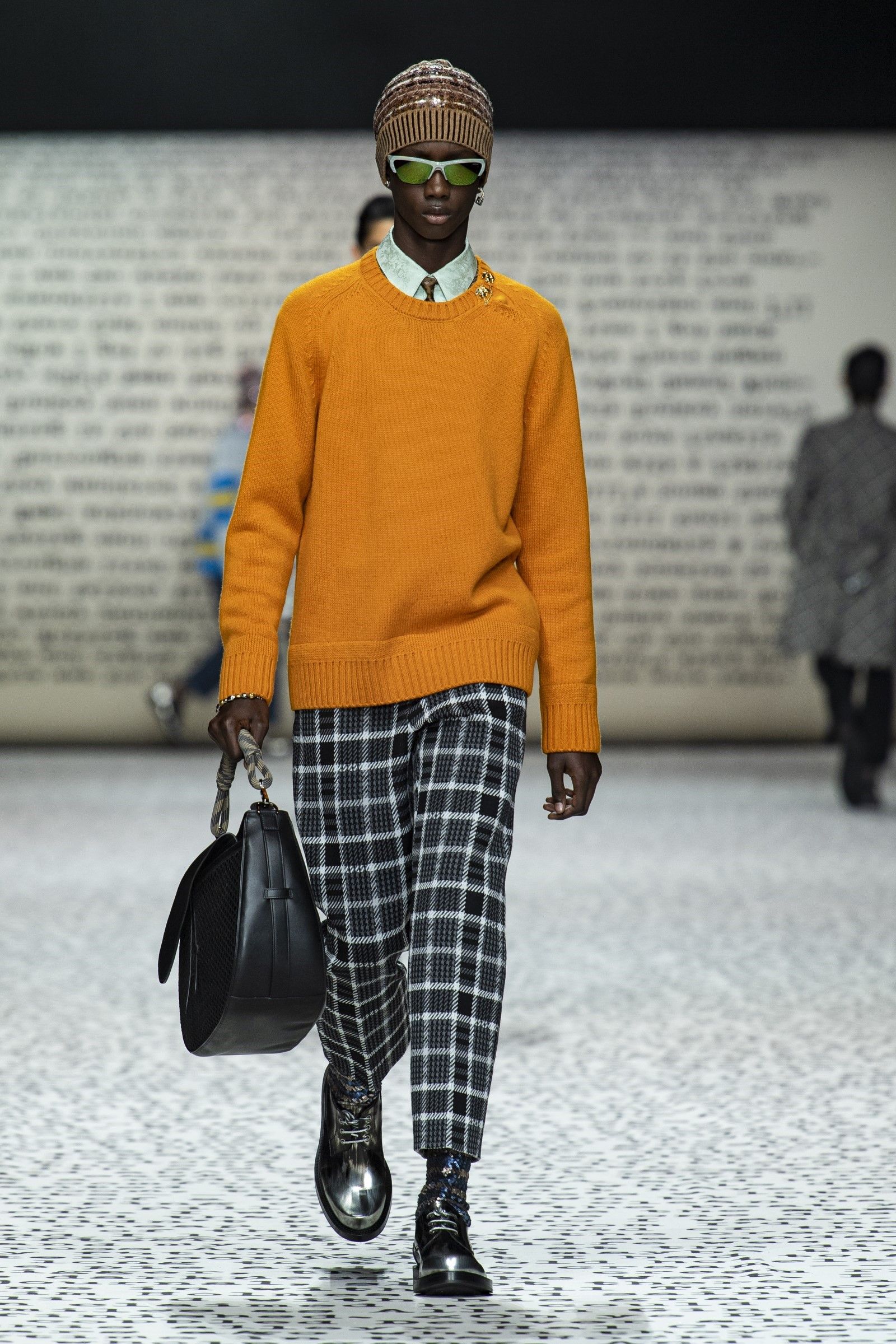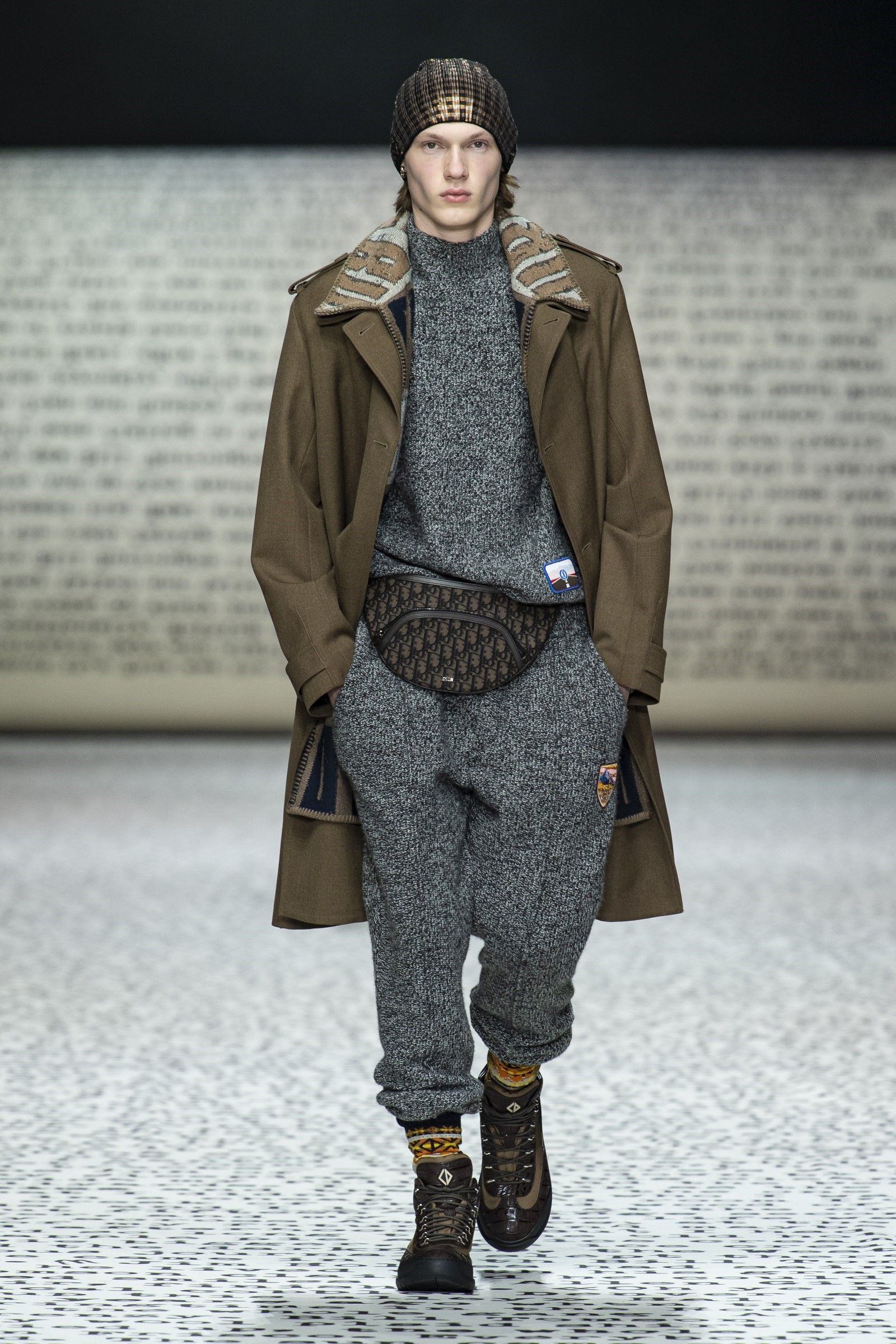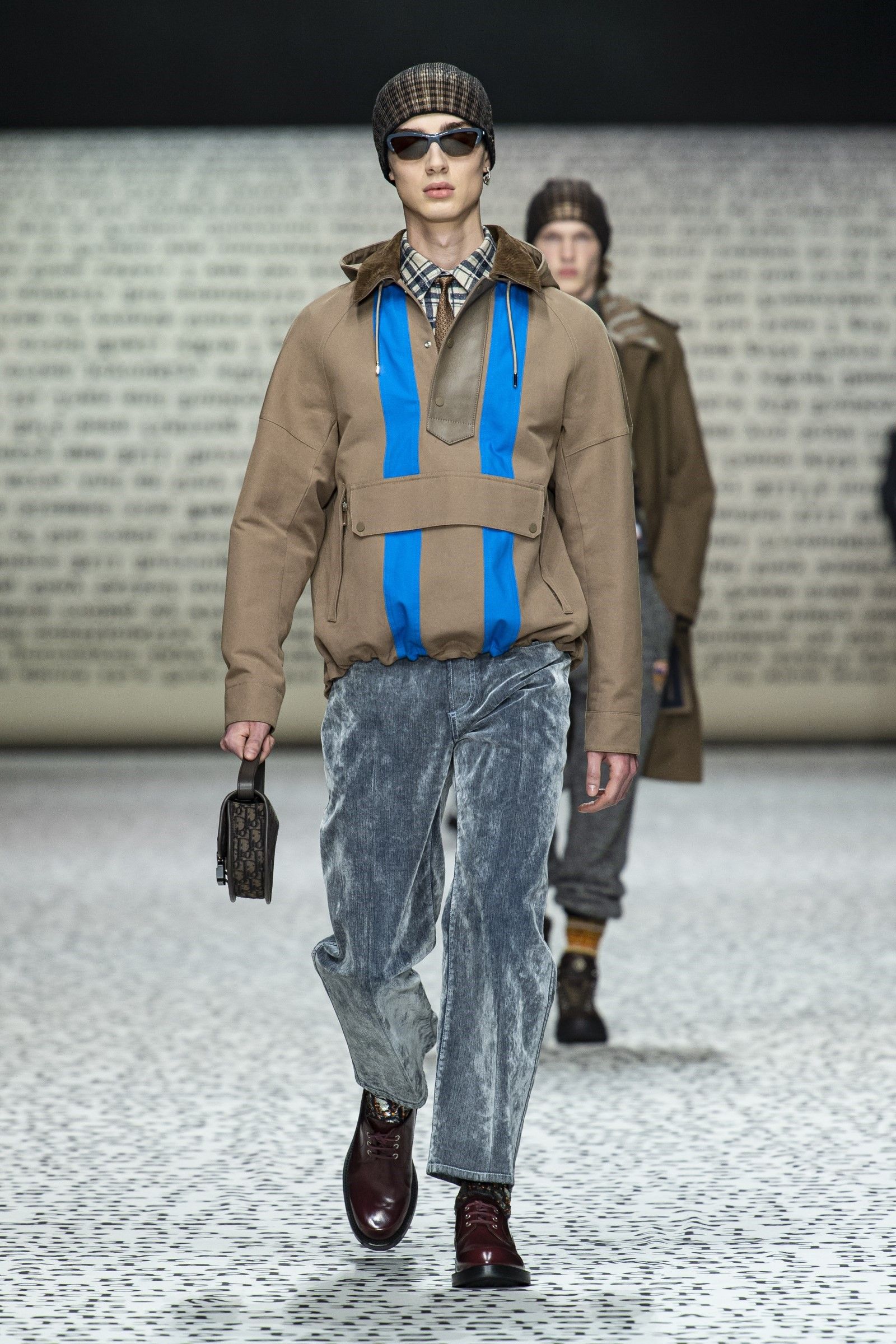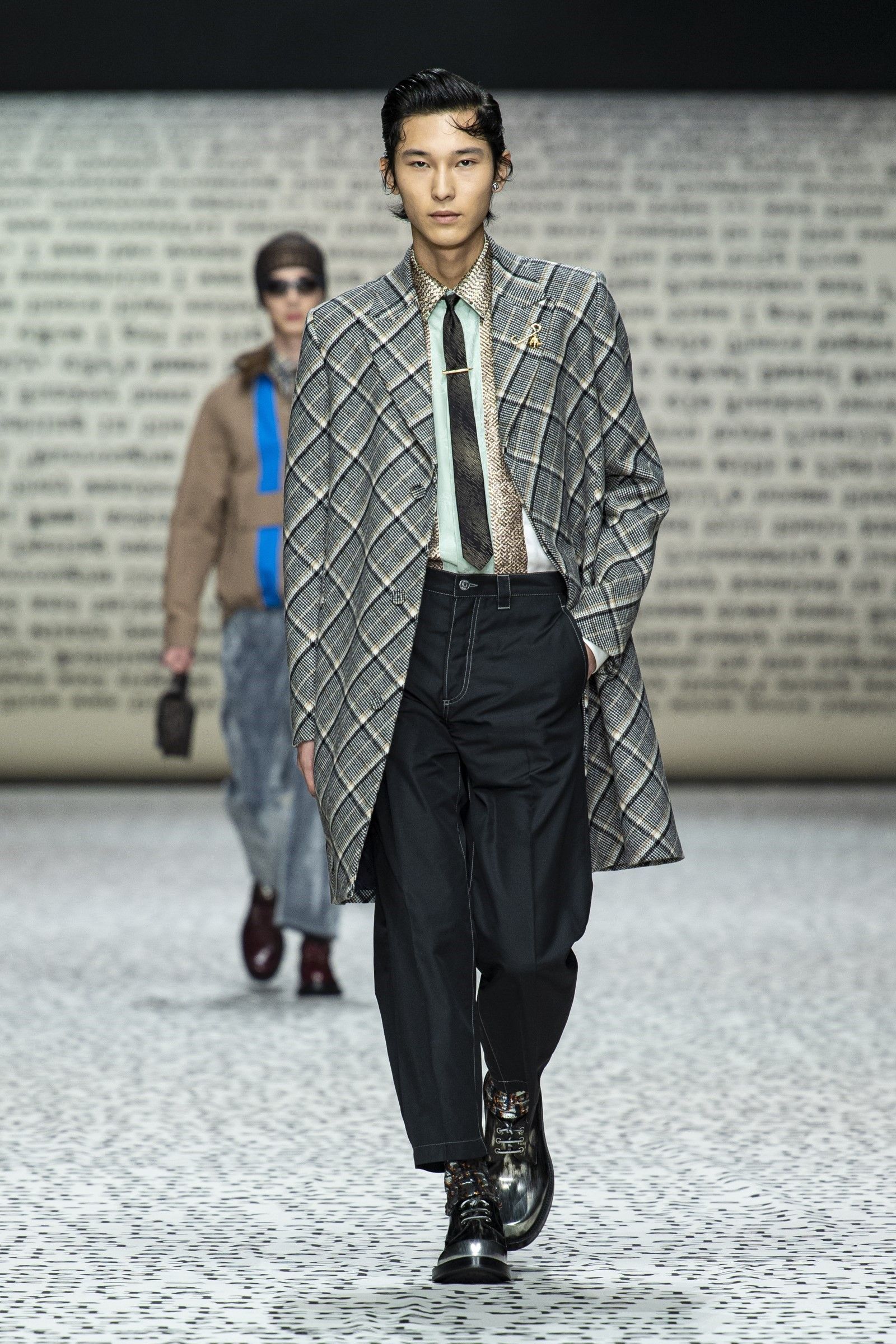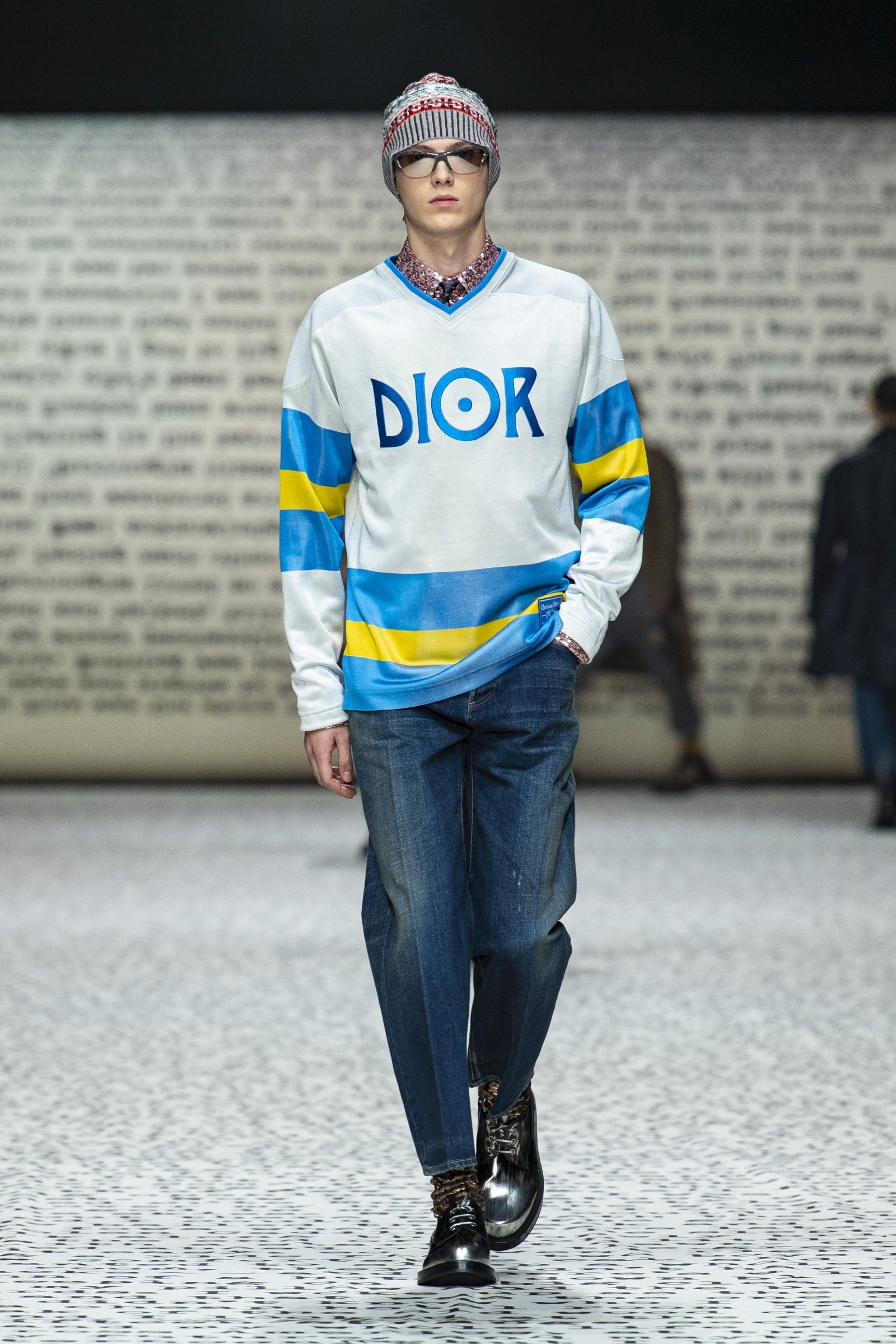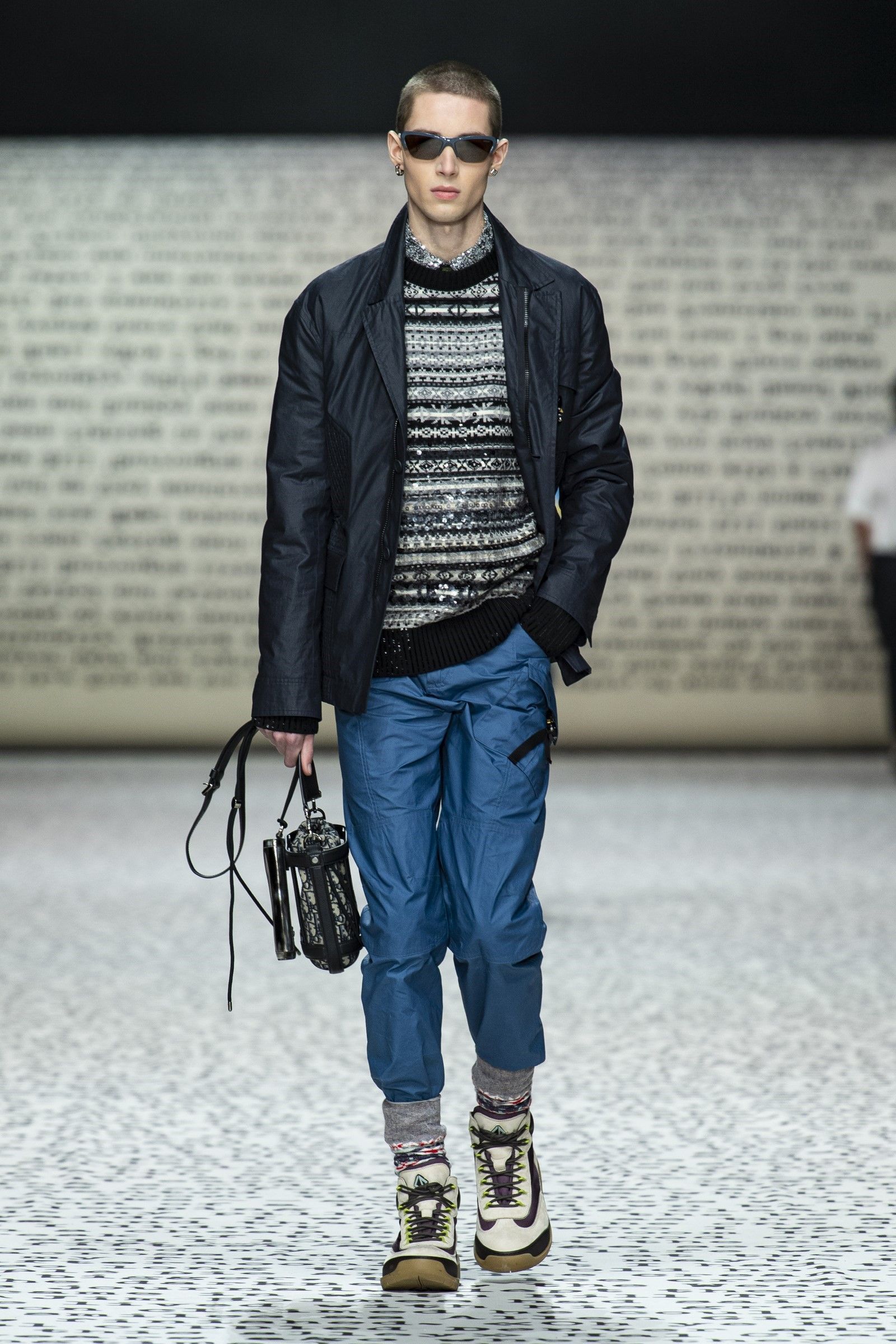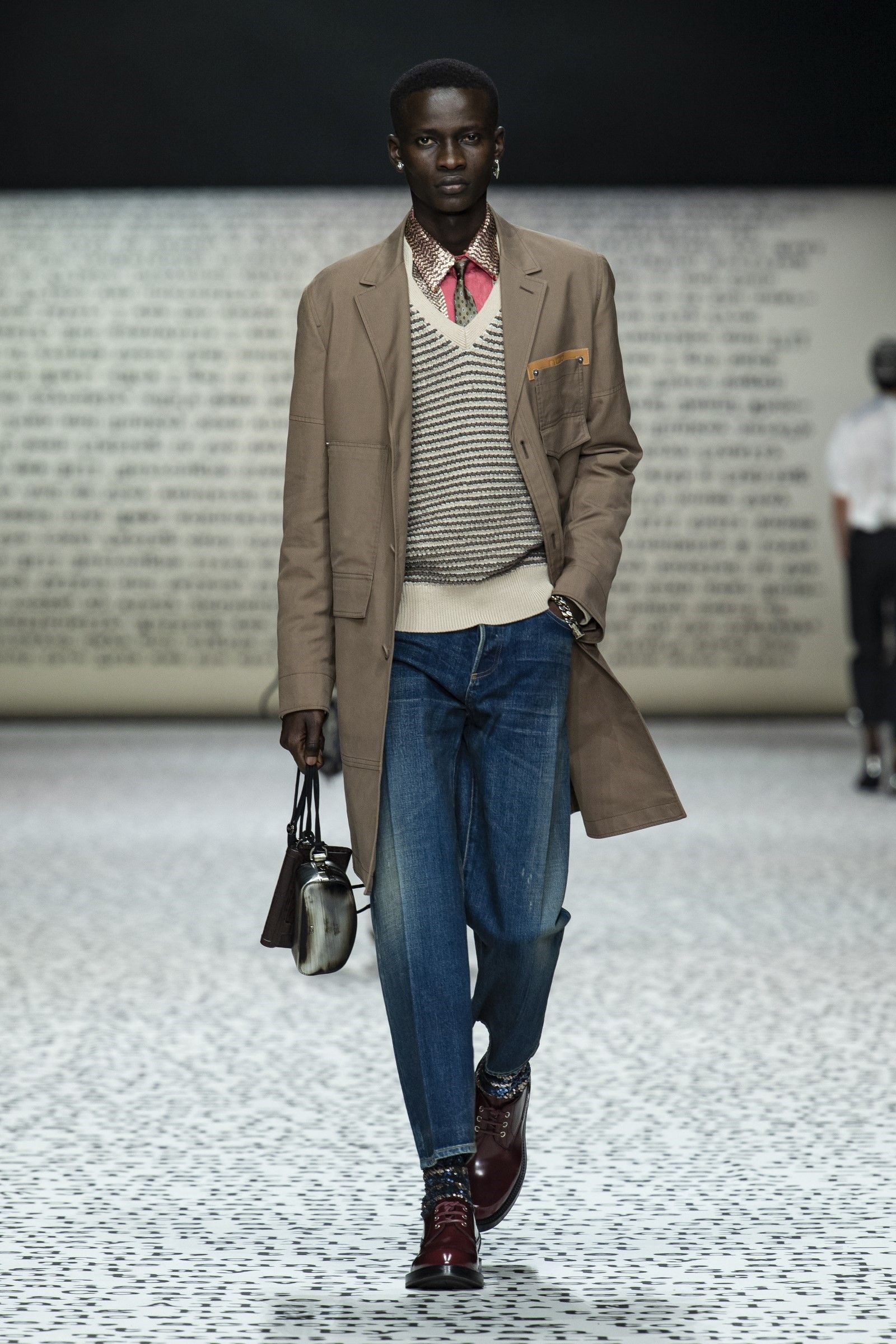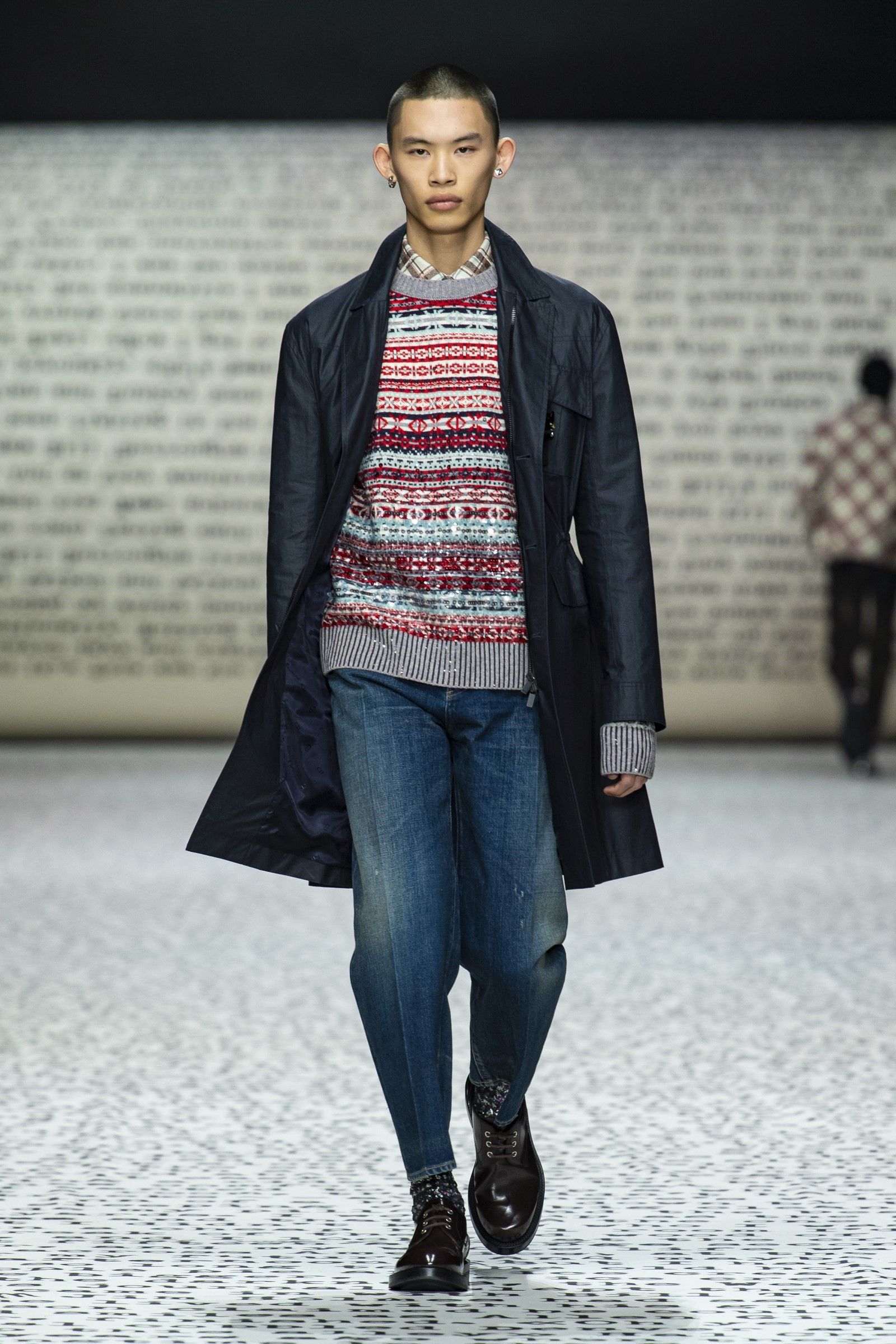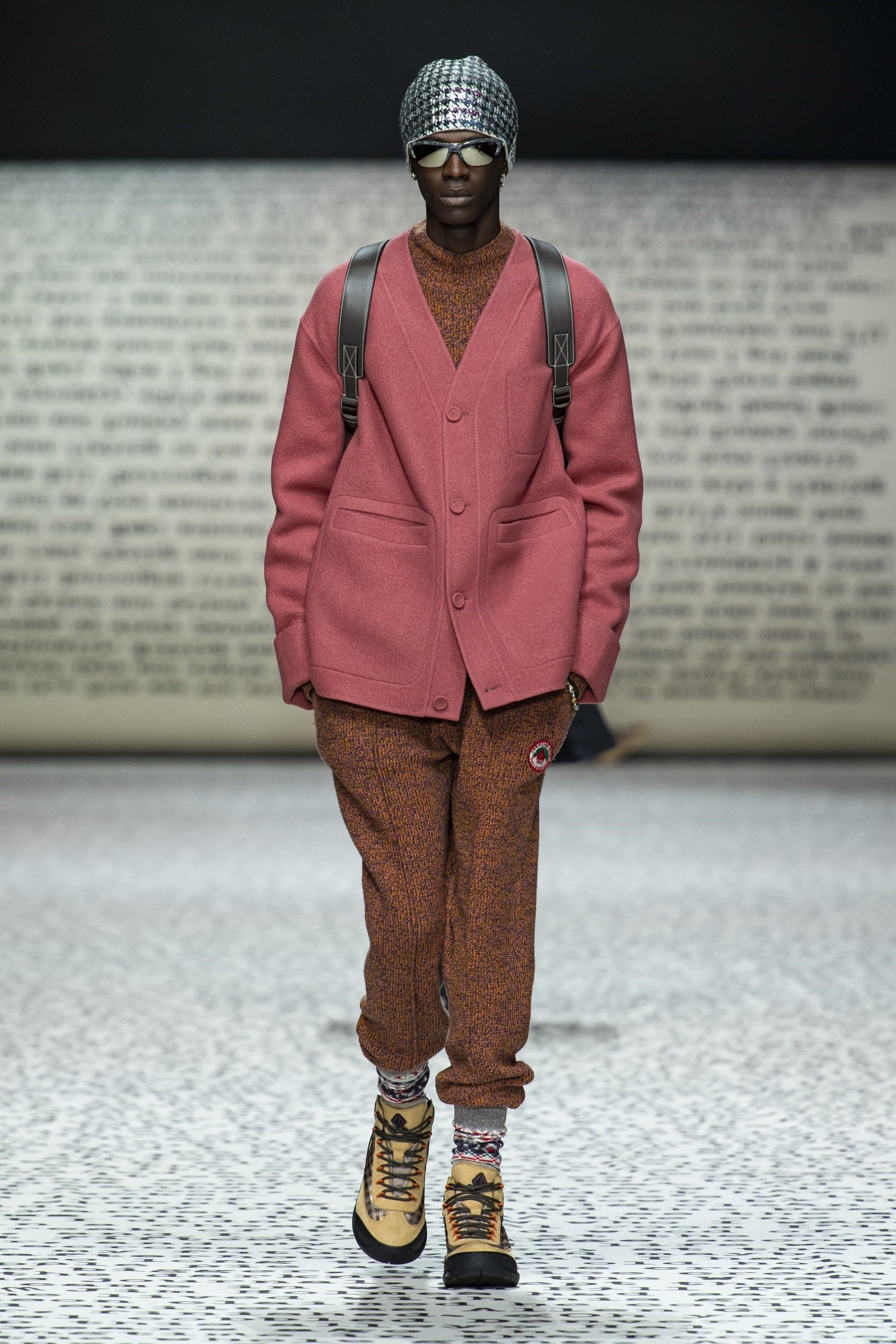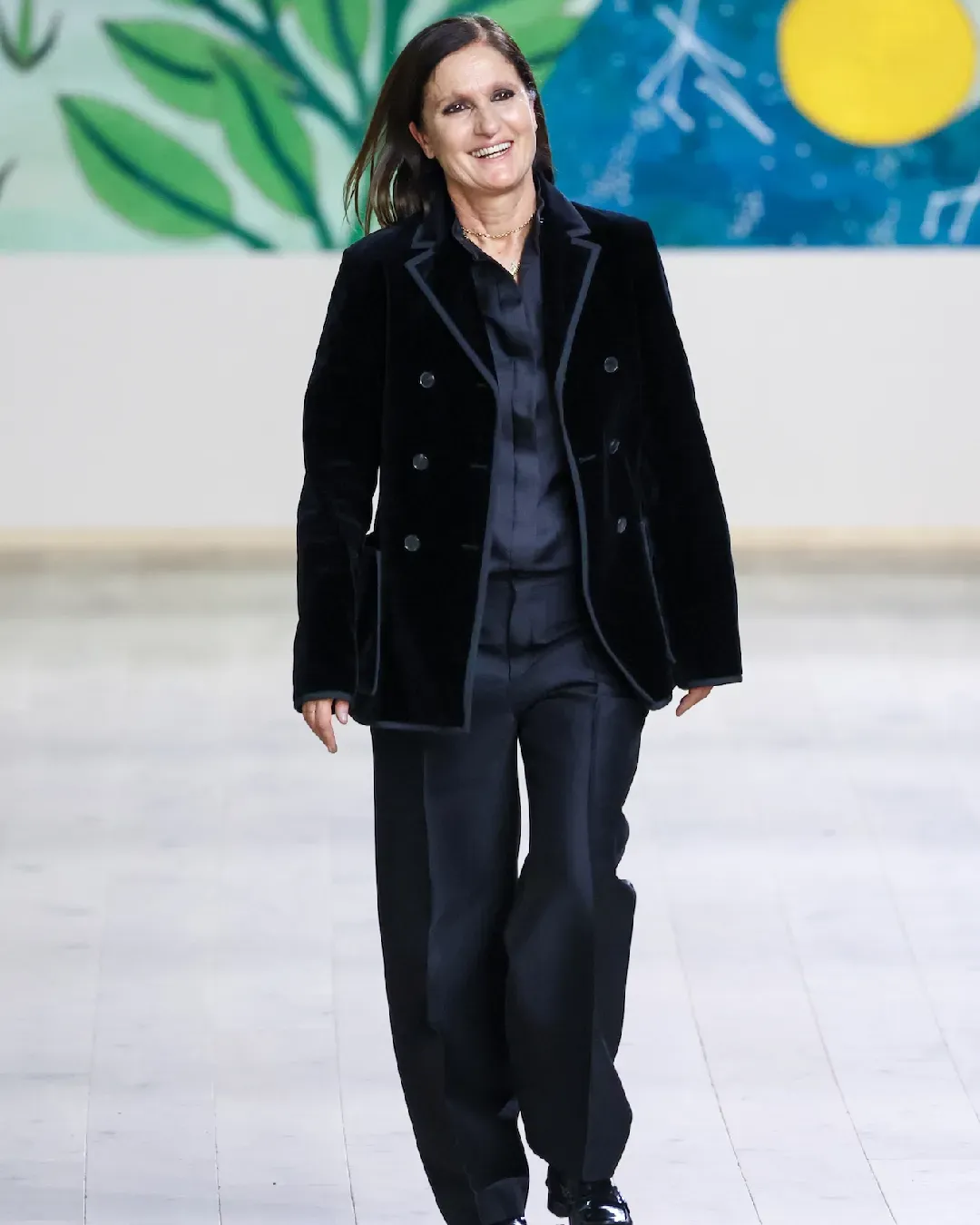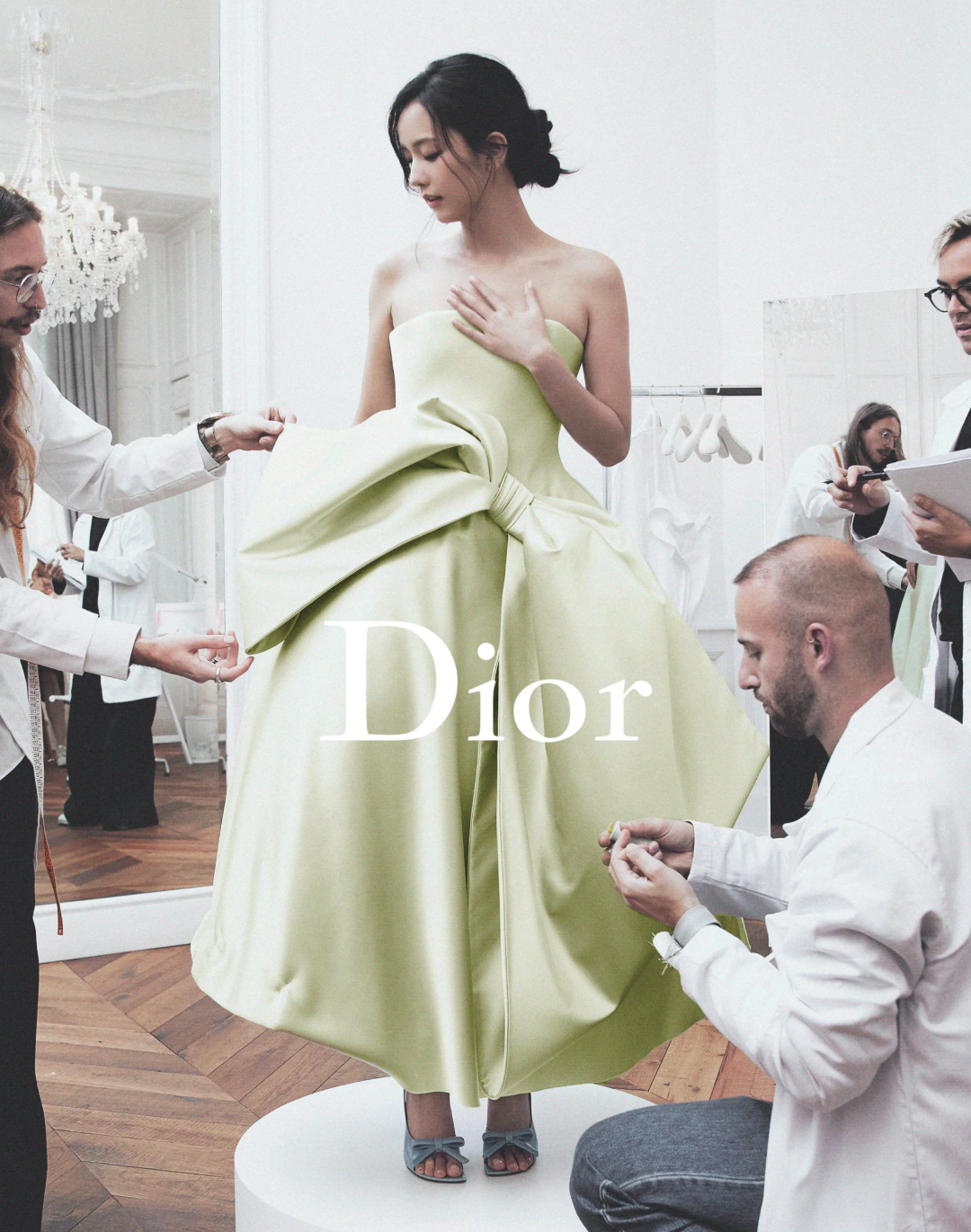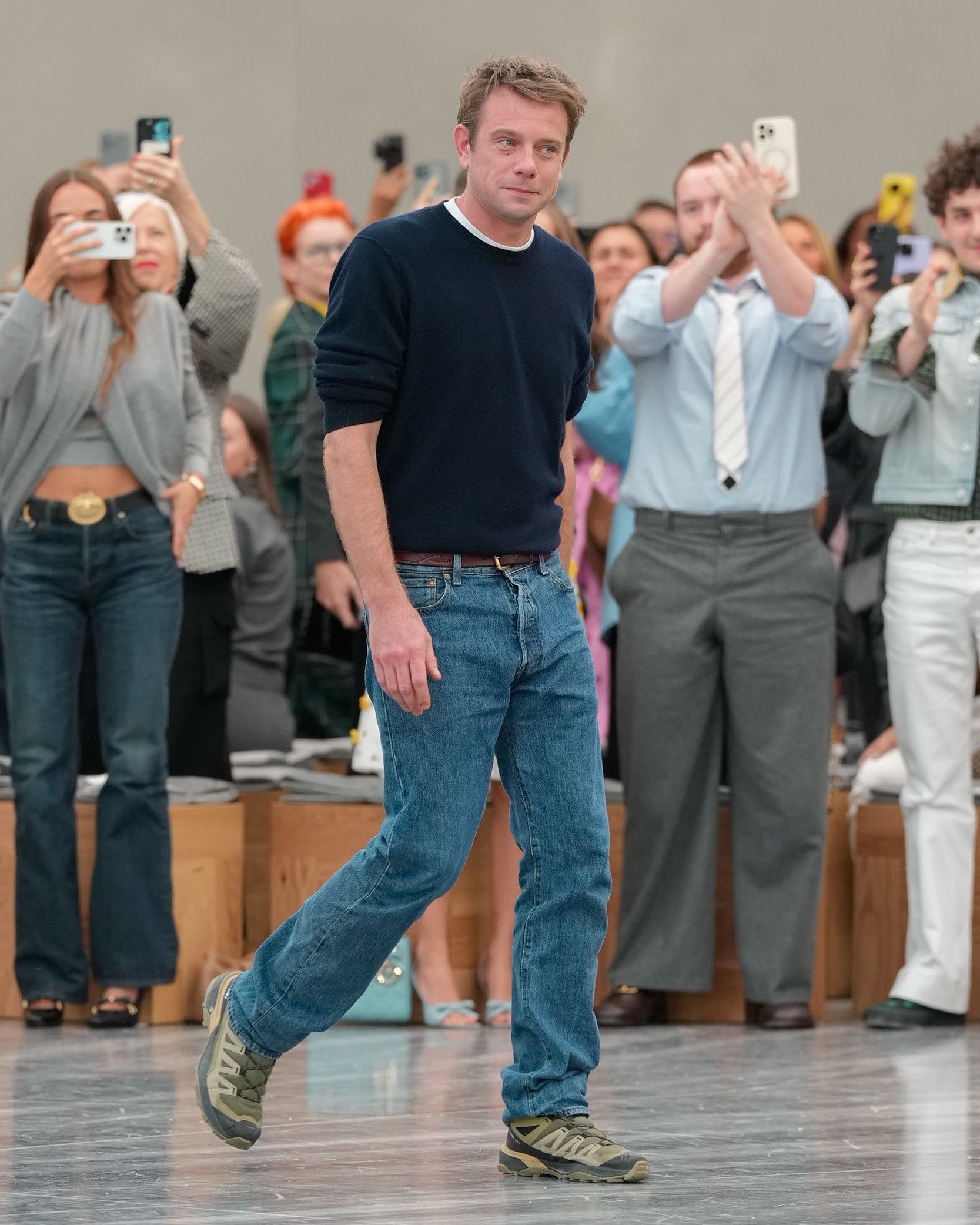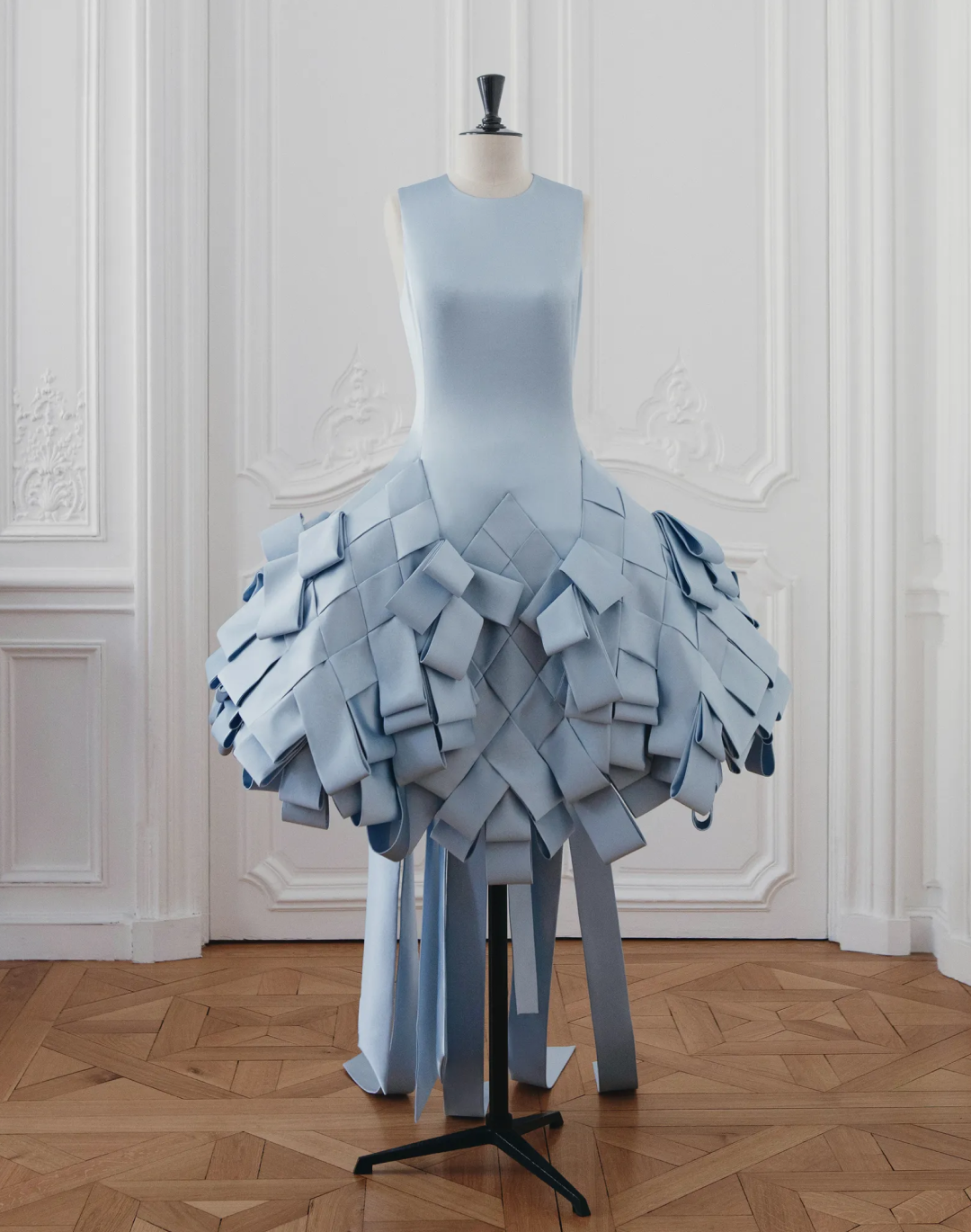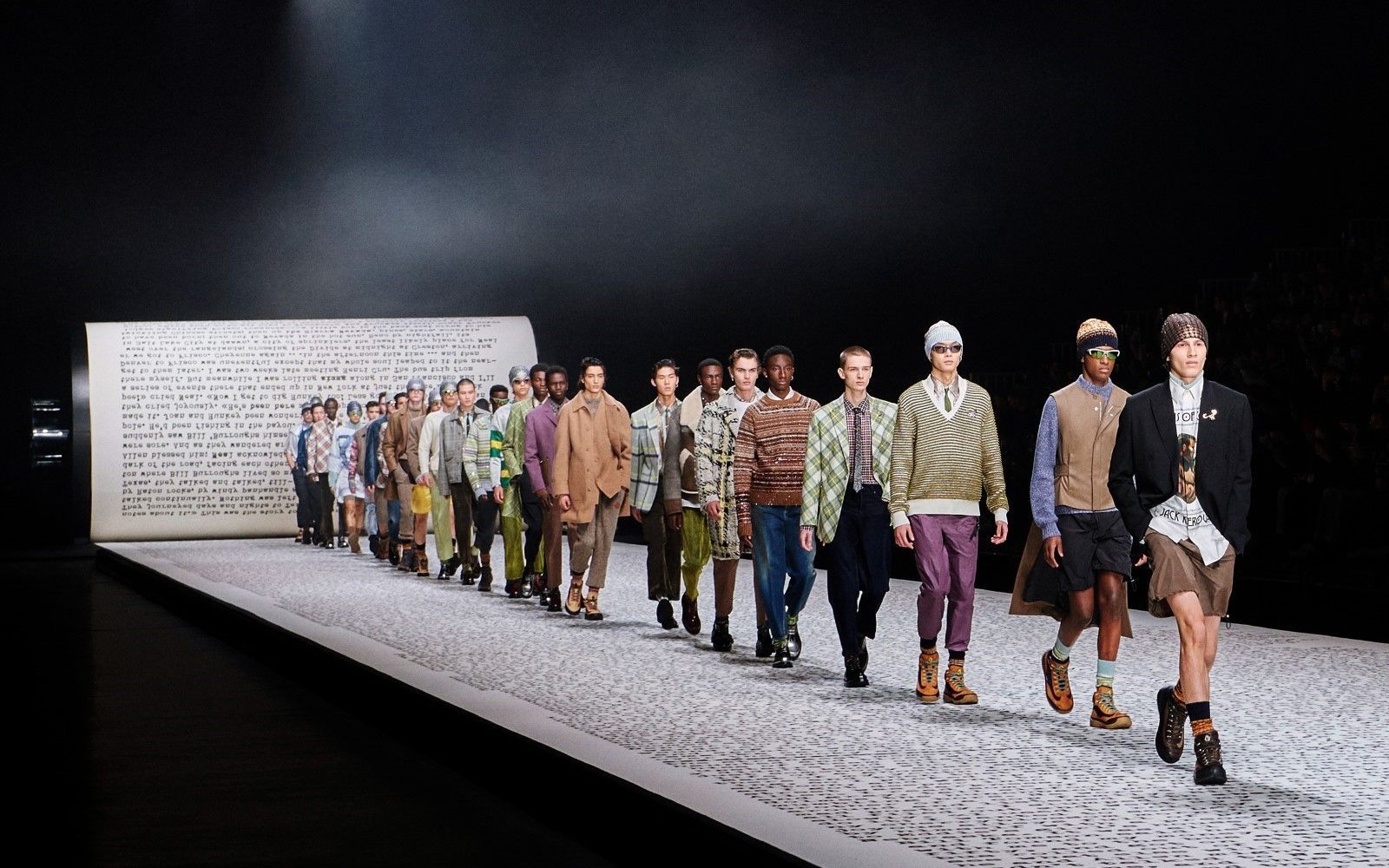
Kim Jones' new hipsters in Dior Men's Pre-Fall 2022 show The brand's latest collection was inspired by Kerouac and the Beat Generation
«Kids are into print now», said Kim Jones to WWD after his latest show for Dior Men in London. «Lots of kids are getting bored of digital and they want to see things in real life, they want to see what the next page is — not just what they Google». Words that are emblematic of a collection that not only celebrates the printed paper in its own setting (a gigantic reproduction of the manuscript of On the Road by Kerouac) but that also tells a subculture that fashion has not frequented for some years: the Beat Generation. Just the link to the 50s style of the Beat Generation, as well as the unusual in-depth study dedicated to a bibliological collection of first editions of On the Road owned by Kim Jones have placed emphasis on the analog medium recalling another very recent subculture, extinct just before the boom of streetwear promoted by Jones himself with Louis Vuitton x Supreme, who are the hipsters.
Just the hipsters/indies of the late 2000s had raised a cult both to the analog medium (vinyls, old books, old bicycles and typewriters) and to the beatnik style filtered through the moodboards of Tumblr and that therefore rediscovered the Fair Isle sweaters, leather shoes, tweed jackets, wool caps and in general all those vintage garments with a retro flavor that opposed the mainstream of growing fast fashion – all a series of staples come back to life today both on TikTok with trends such as cabincore/ cottagecore, and through the vintage craze. A craze that is nothing more than the search in the past for a cultural validation for the present - present that, opening up to multiculturalism, digitalization and an ever wider diversity, it needs to find grip and balance in its past to progress on its way and correct the perspective and historical errors of that culture of origin, discarding its negative sides without losing its achievements.
Obviously, being Kim Jones and Dior, the speech was carried out quite far ahead of the aesthetic baseline of the hipster / indie boy of 2013: on the one hand because, ironically, the knitwear of the collection recalled the true vintage of the 70s and 80s of Marc Bohan's Christian Dior Monsieur still available today in many vintage stores; from another because this vintage mood was just a springboard for a series of precious details such as, for example, the shimmering sequins sewn into the texture of the sweaters; the hiking boots in the mid-90s and futurism by Denis Thibaut in exotic leathers or suede paired with sandals decorated with climbing cords or ultra luxury leather accessories and jackets.
Obviously, as we said, vintage is a starting point and not a point of arrival: scattered over the 49 looks appeared various knitted suits and trousers in solid color wool bouclé that push forward the definition of luxury leisurewear; while techwear details and bold graphics have added, together with the mix-and-match of prints and colors, touches of inspiration and above all great desirability and modernity to the collection. The reinterpretation of the brand's archive therefore becomes very interesting considering how, given the enormity of Dior's archives, returning to re-evaluate that knitwear heritage and the entire repertoire of classic menswear means shedding light on a neglected period in the history of the brand but also giving meaning and raison d'etre being to an aesthetic that, without those modern touches and that reinterpretation put in place by Kim Jones, it would only be passé.
A new tension is therefore created in the classic pillars of hipster/indie aesthetics through the continuity between past and present represented, on the one hand, by the cultural base provided by the Beat writers and, on the other, by the modern touches added by Kim Jones and, in general, by the styling of the pieces - a frame that justifies and validates that aesthetic today but that is also able to dialogue with modern trends without falling back into stereotyped scripts. Hence the dualism of the collection: on the one hand the functional and technical garment but on the other the sensory quality of the sweater and luxury fabric, as well as the juxtaposition of dresses with a precise sartorial structure with soft and enveloping silhouettes.
This return of hipster aesthetics, like the return of the analog that Jones was talking about in relation to the world of print but which Balenciaga also dealt with with the polaroids and VHS of his latest show FW22, speak of a growing polarization that is arising in culture: an increasingly concrete and nostalgic response to the tangible past in an era where art and reality become increasingly digitized.










































